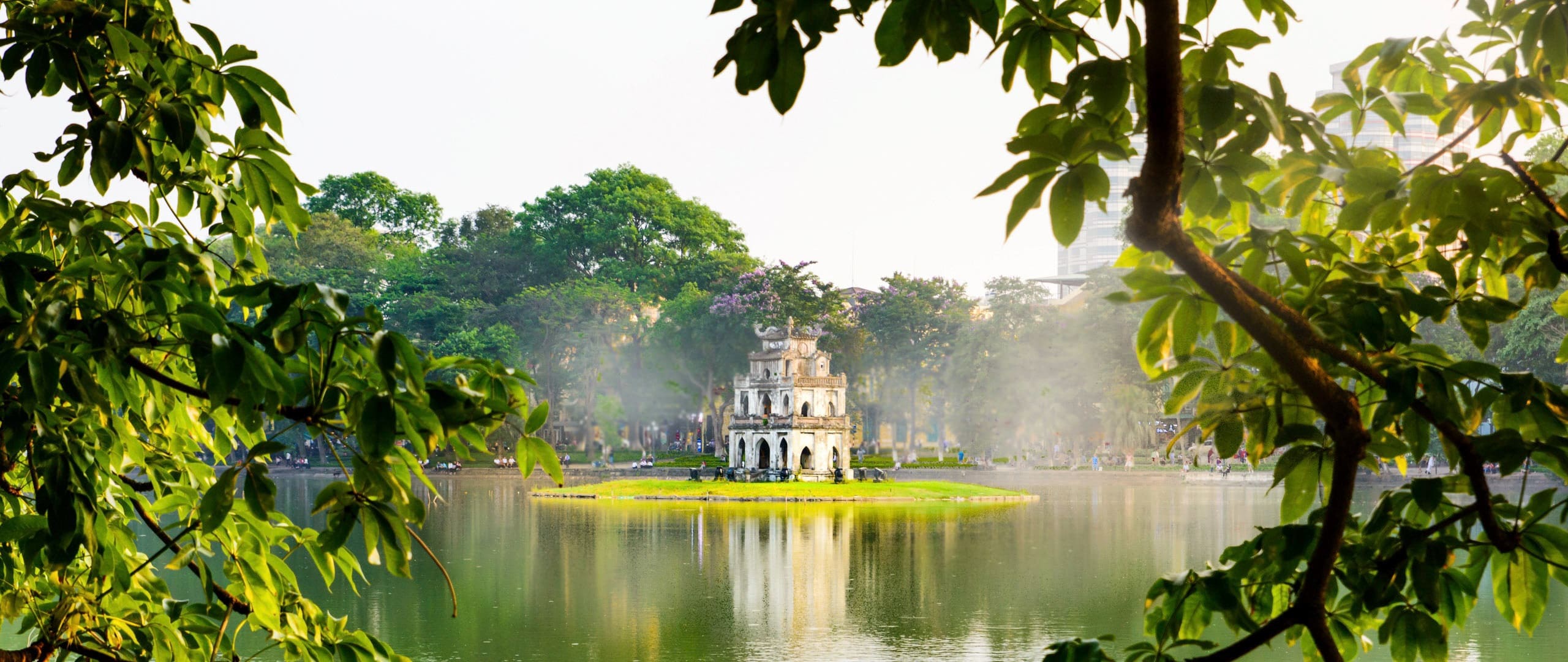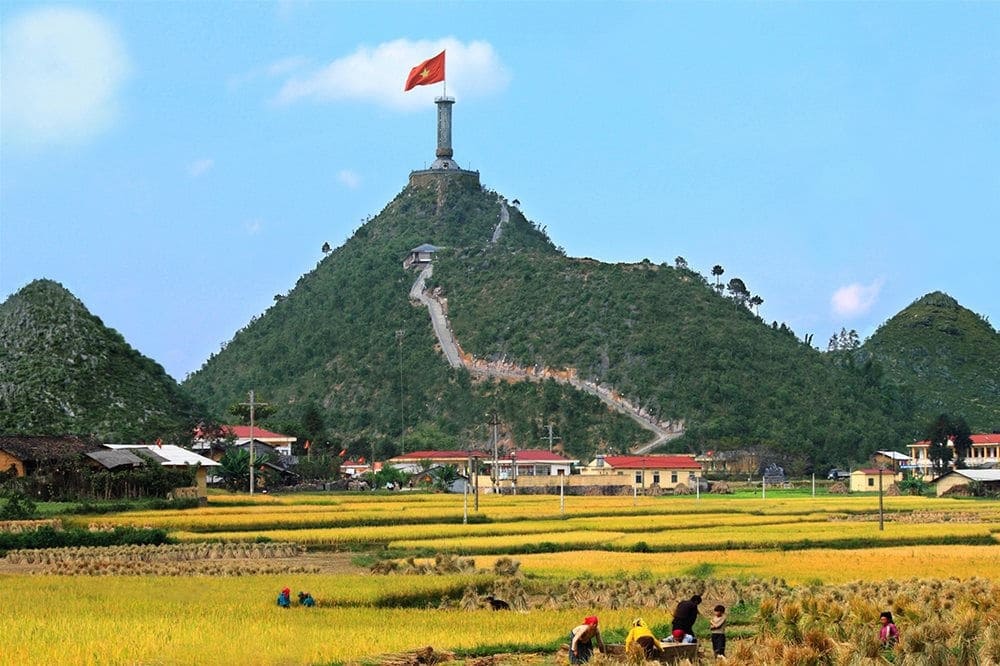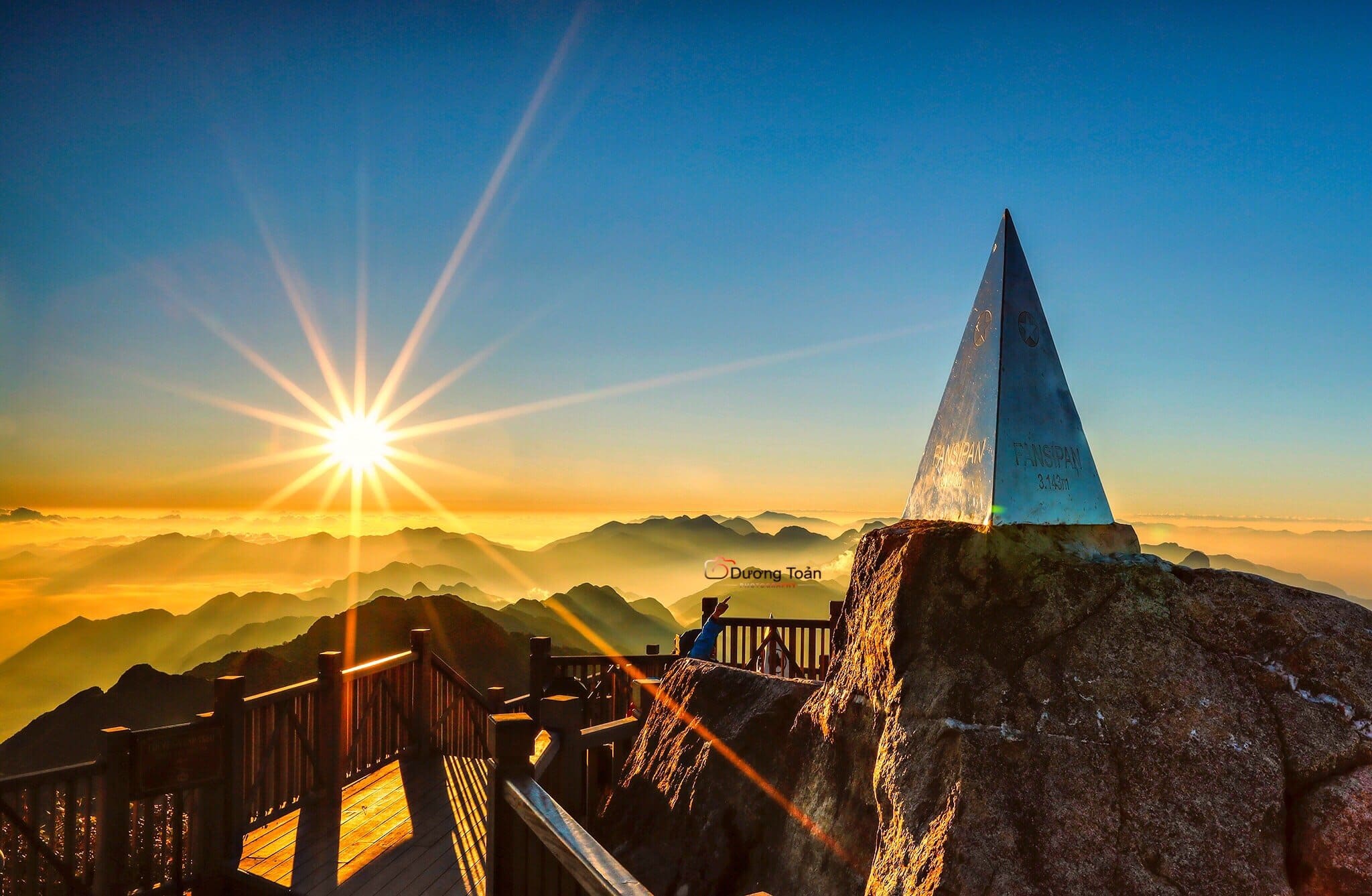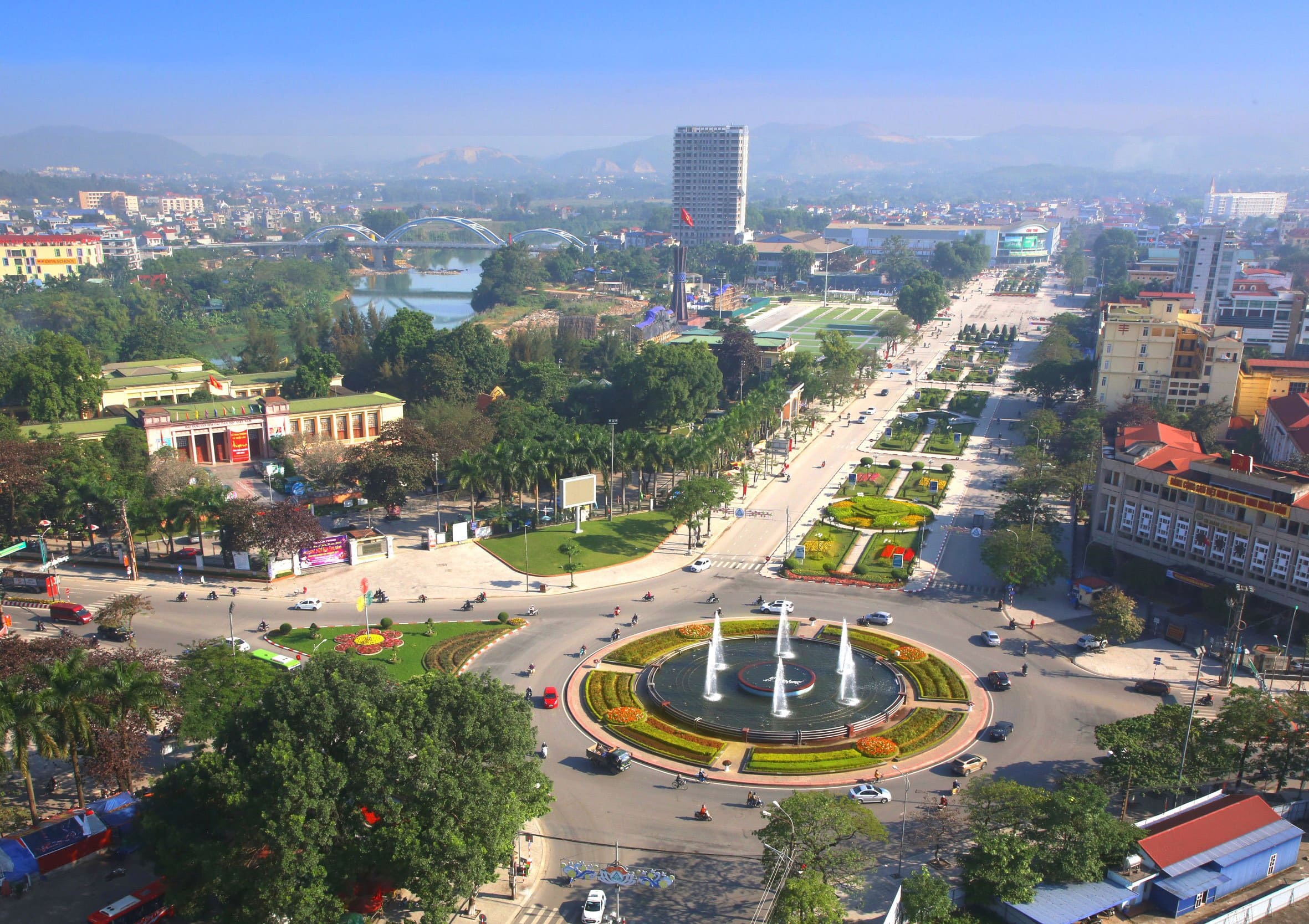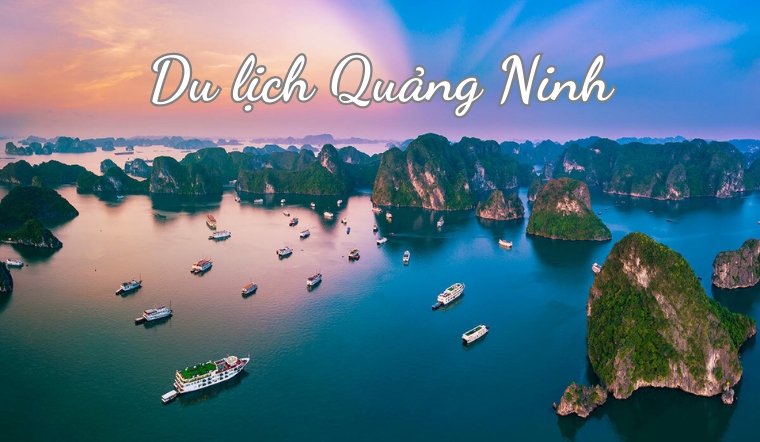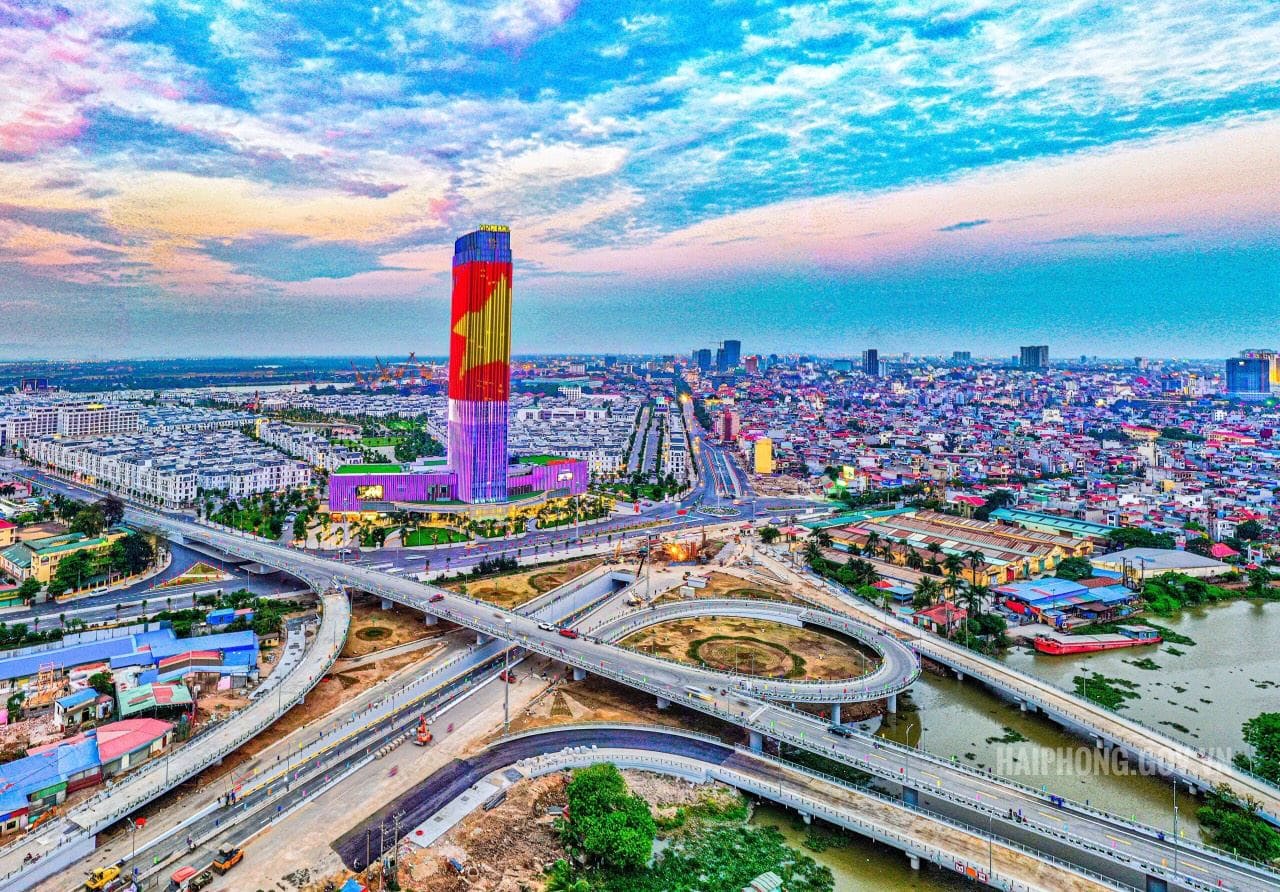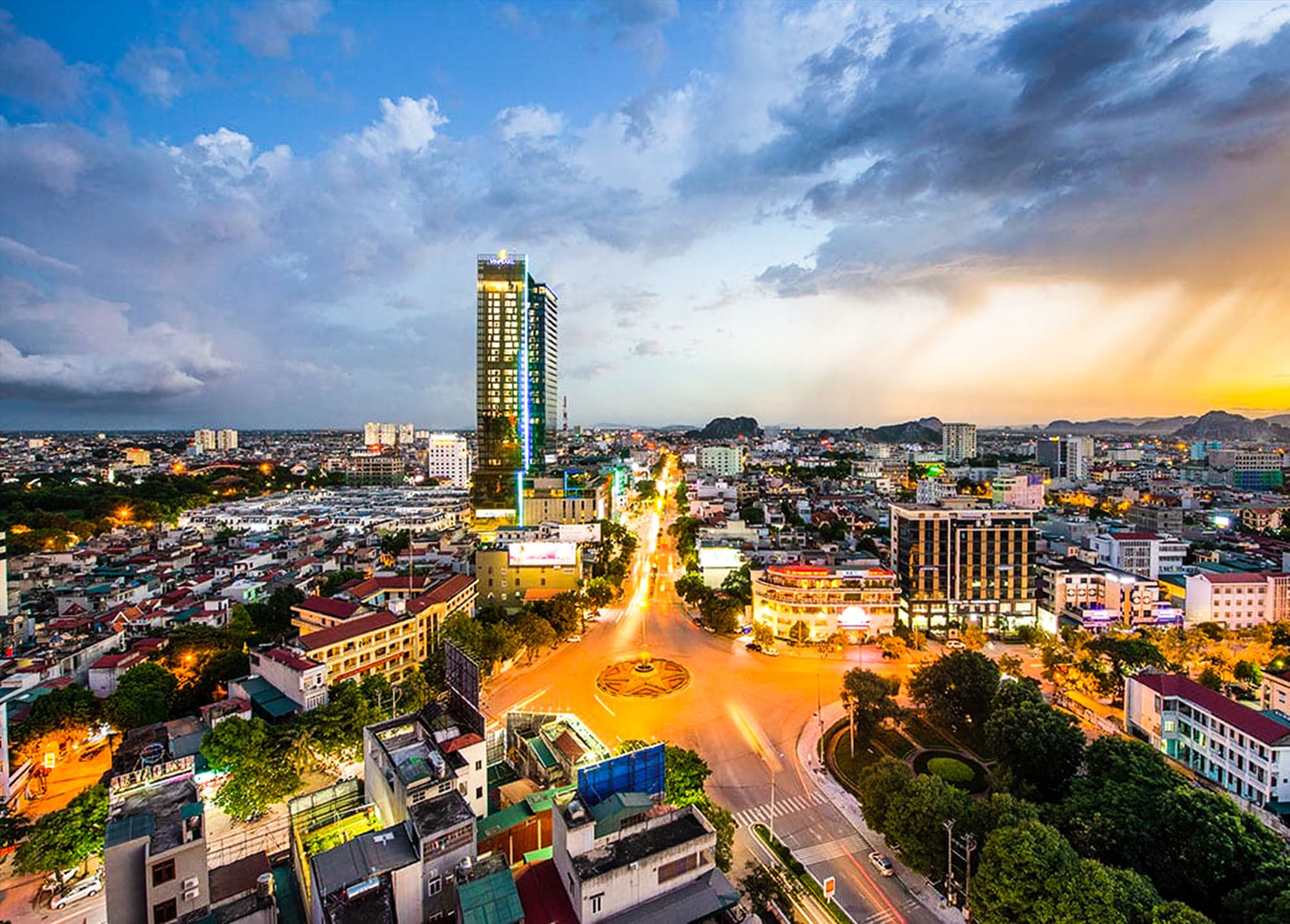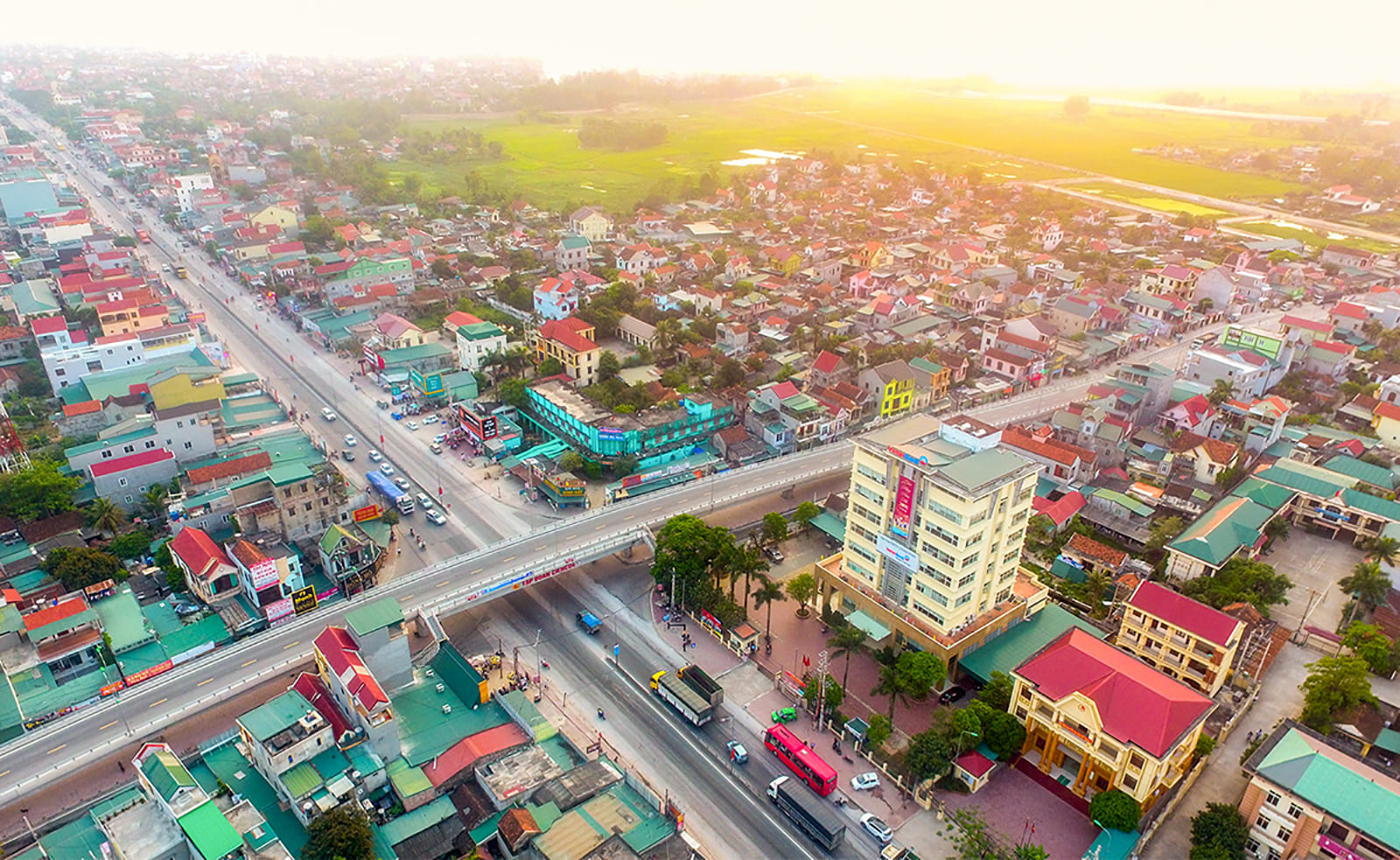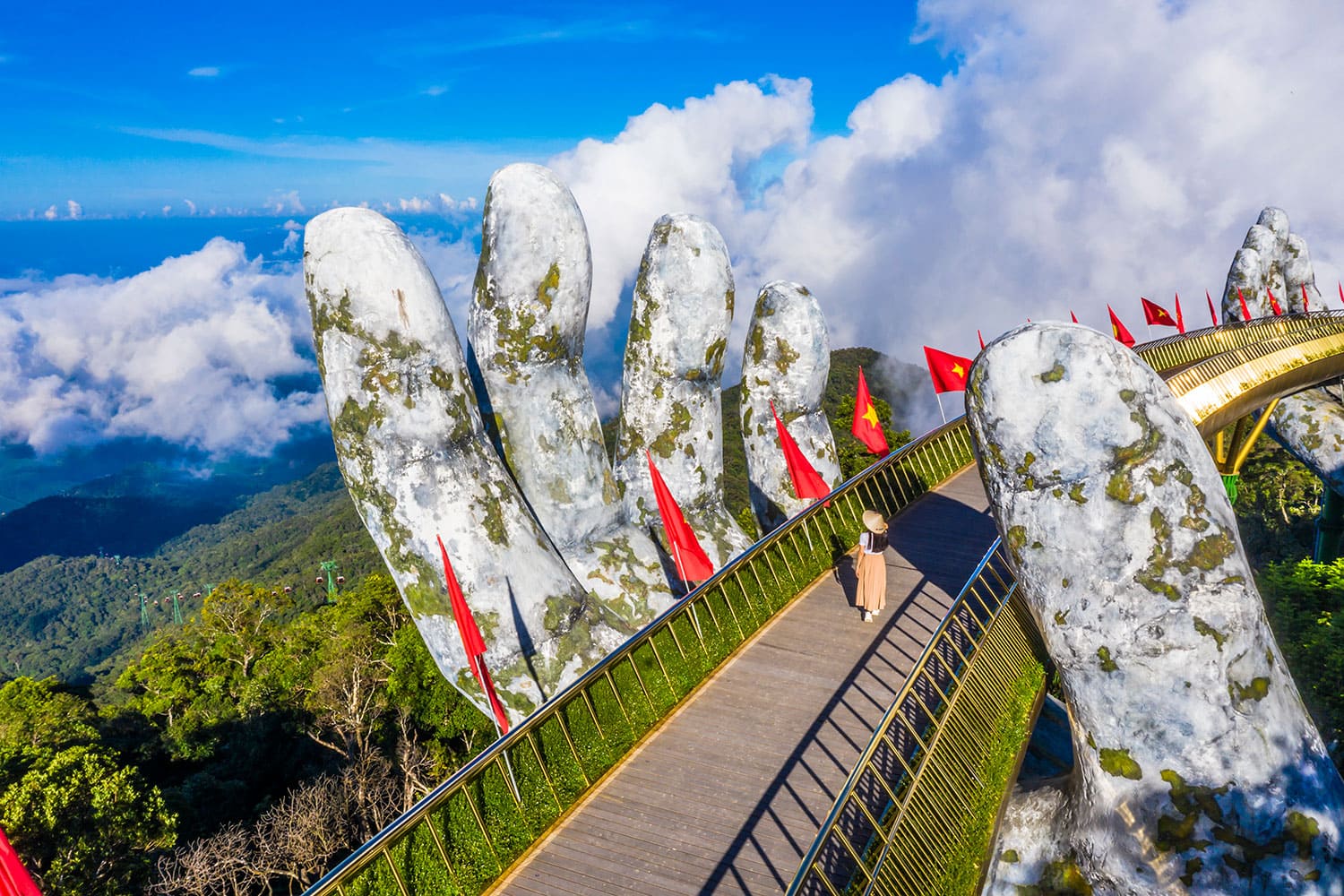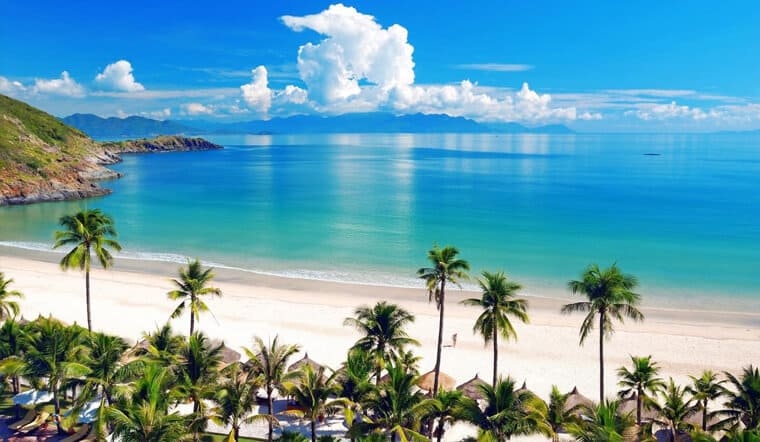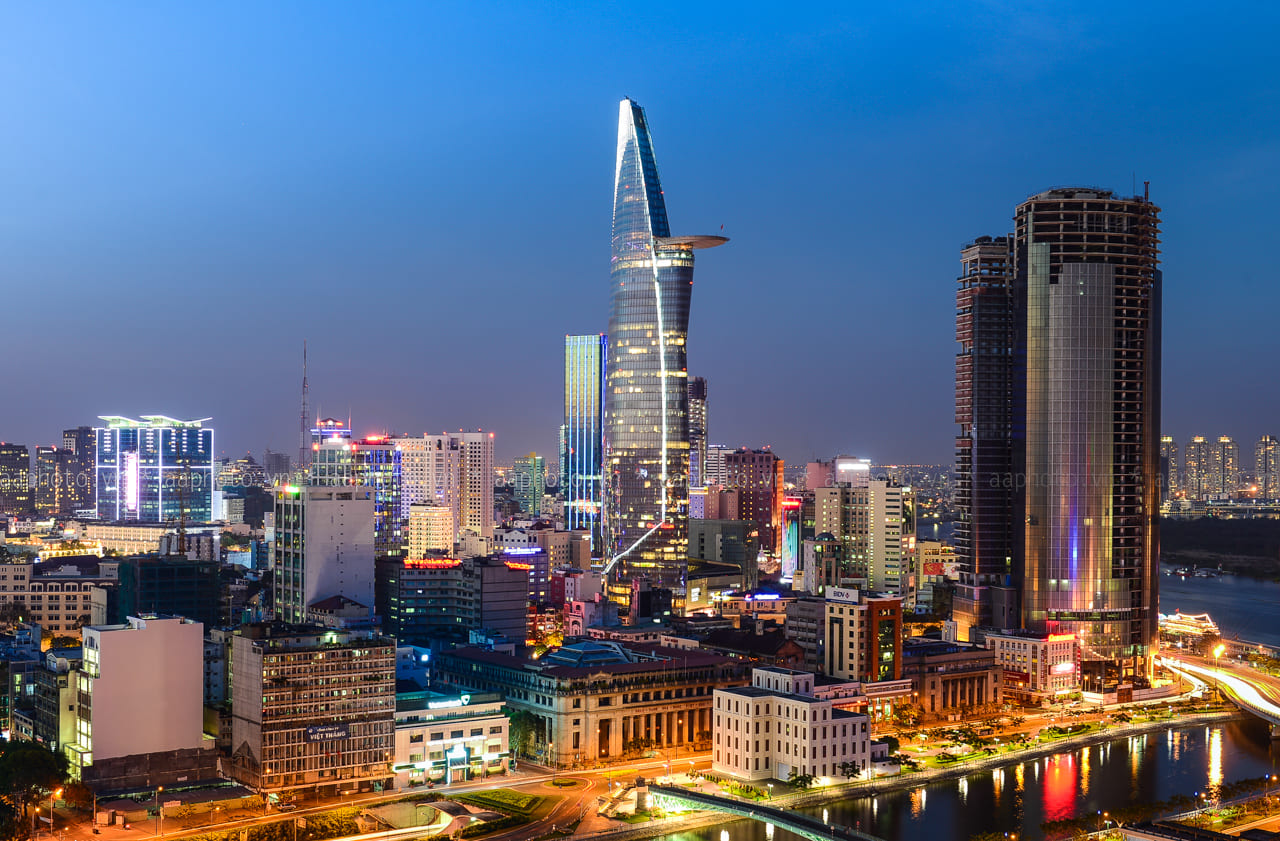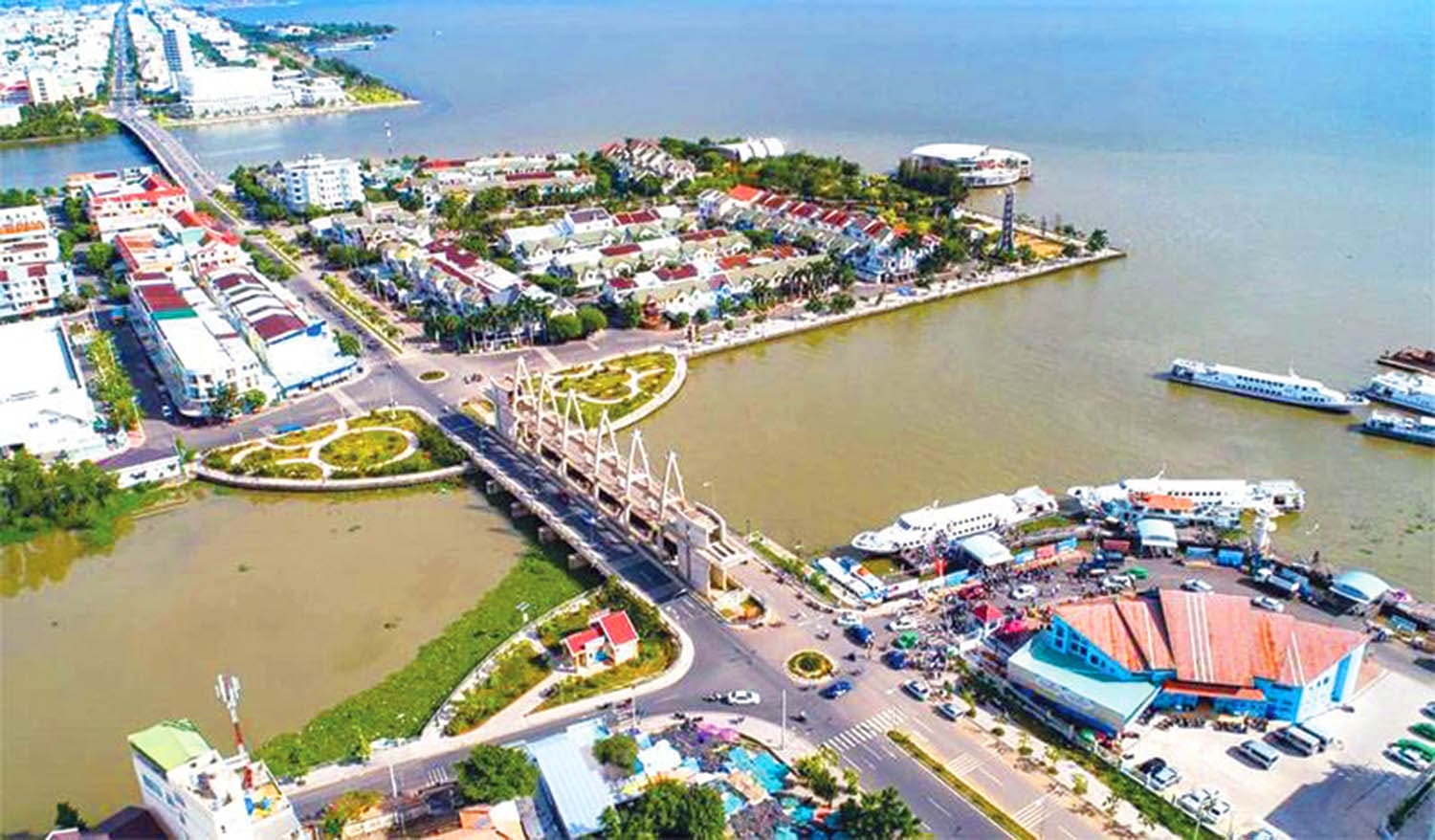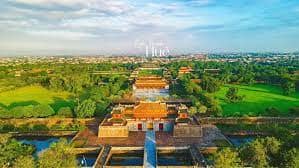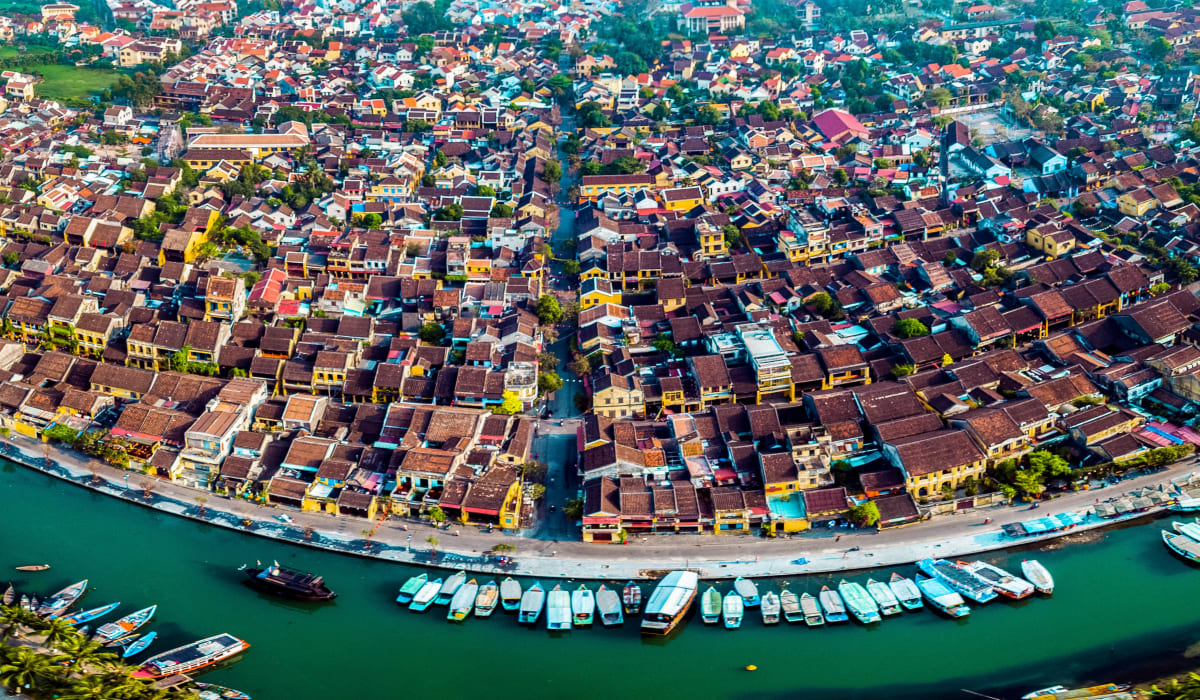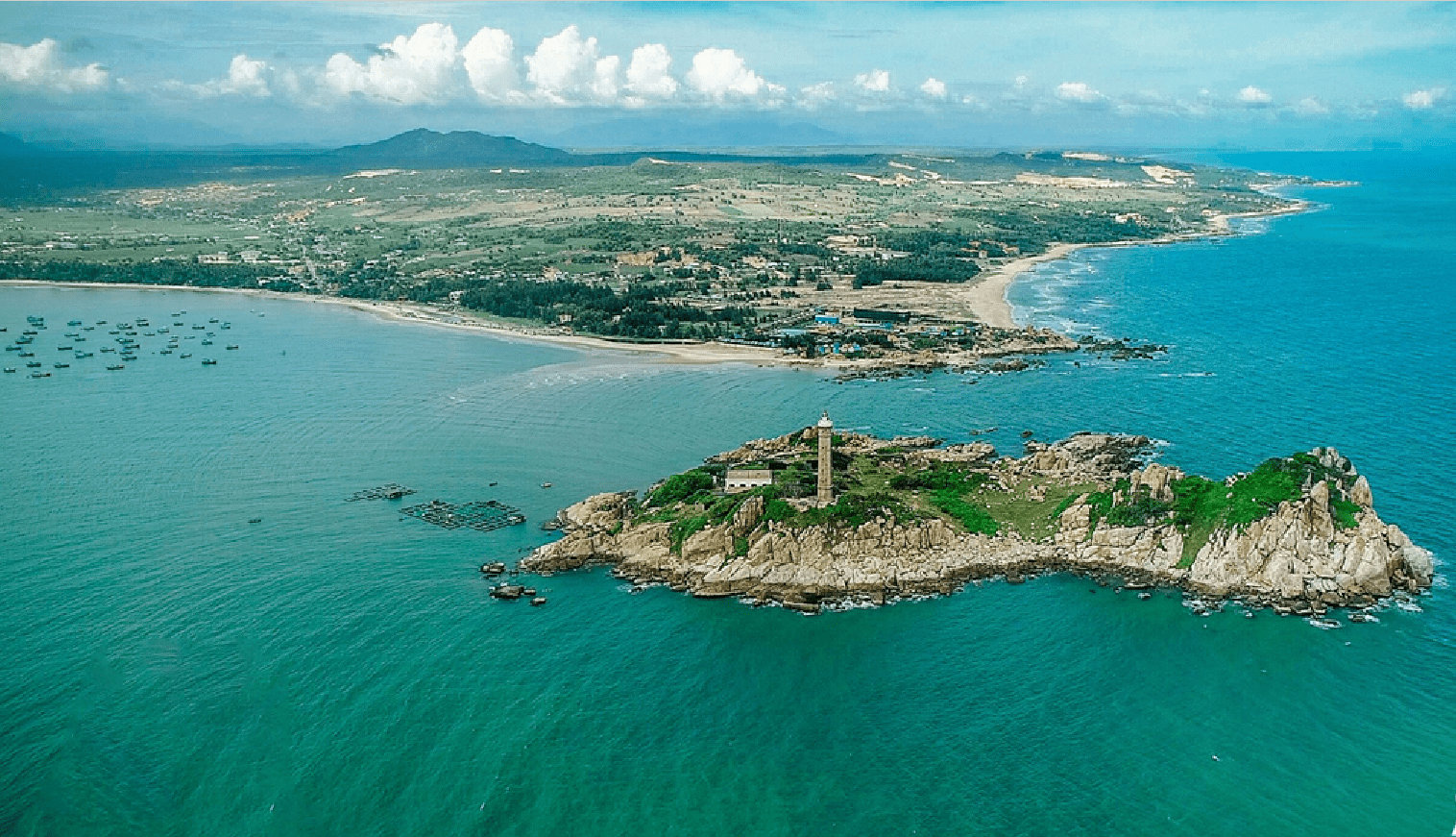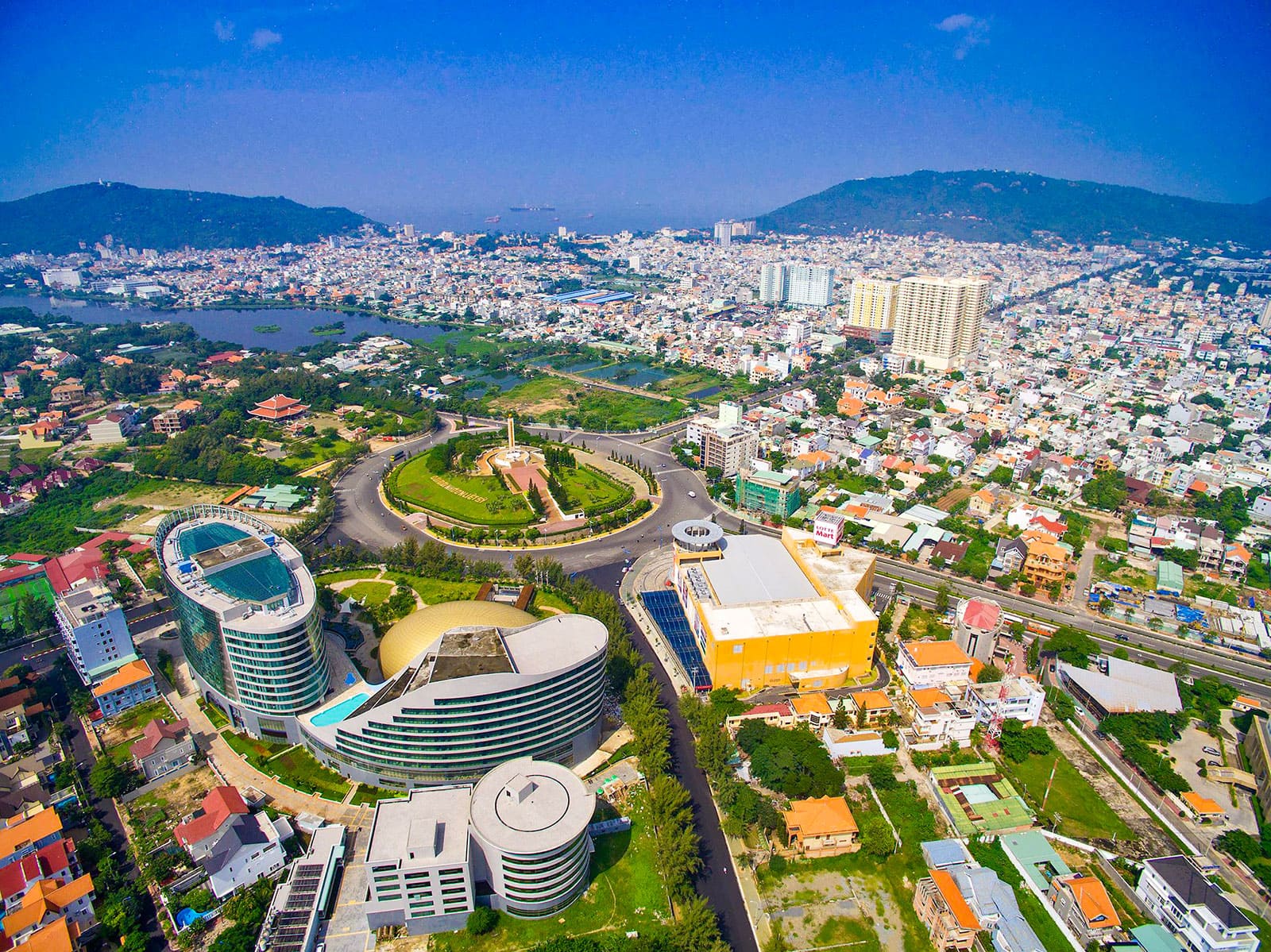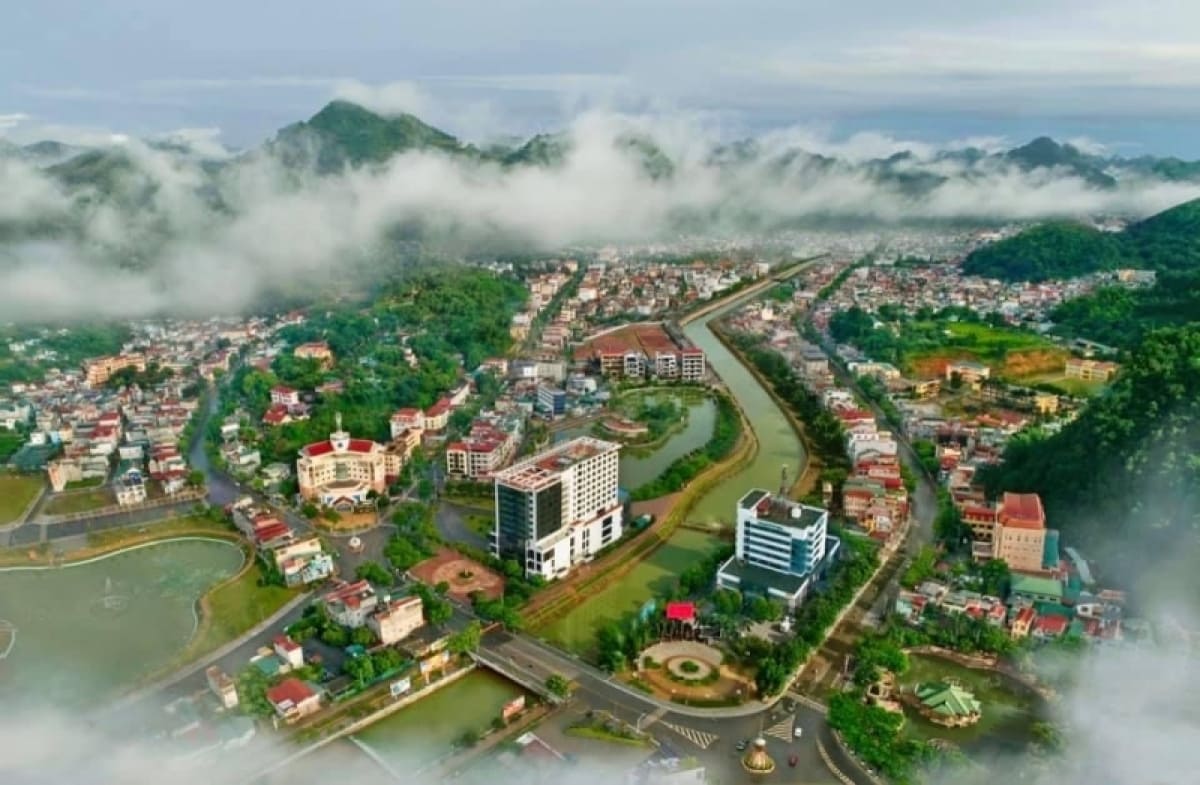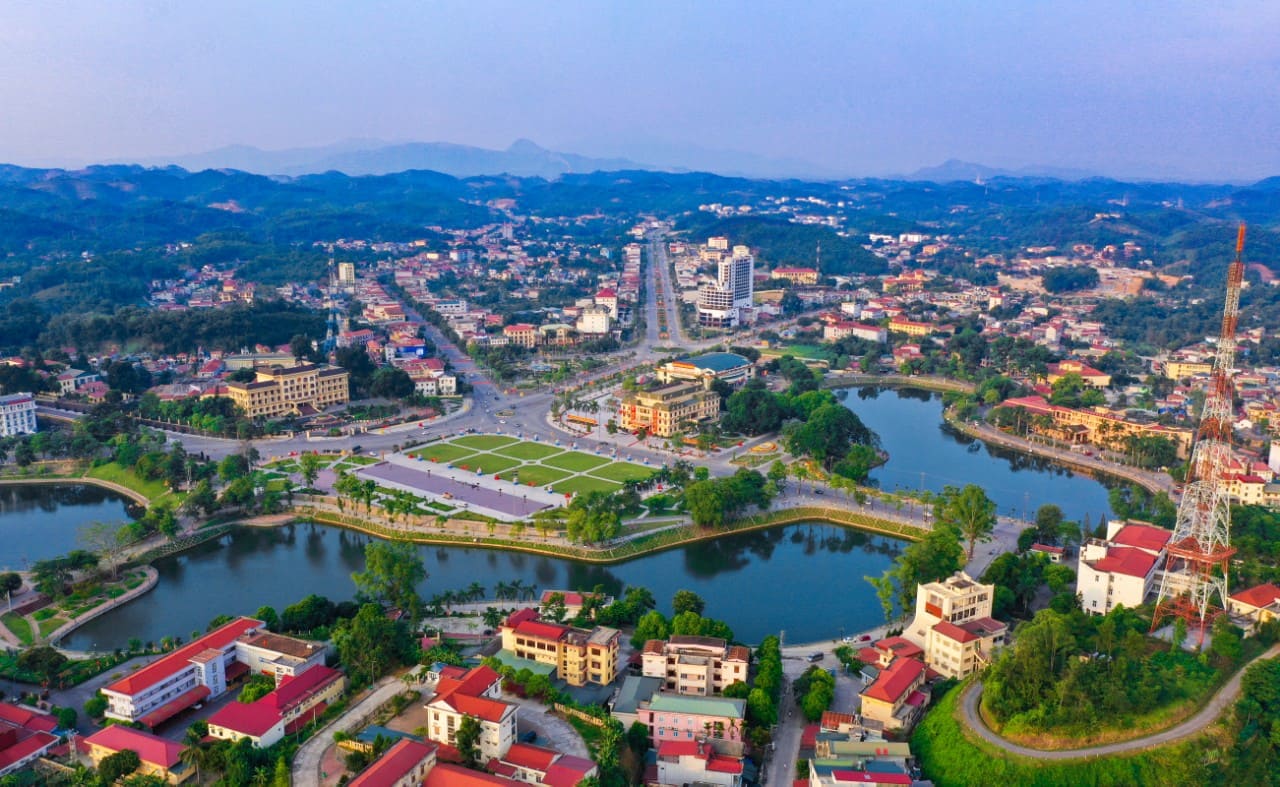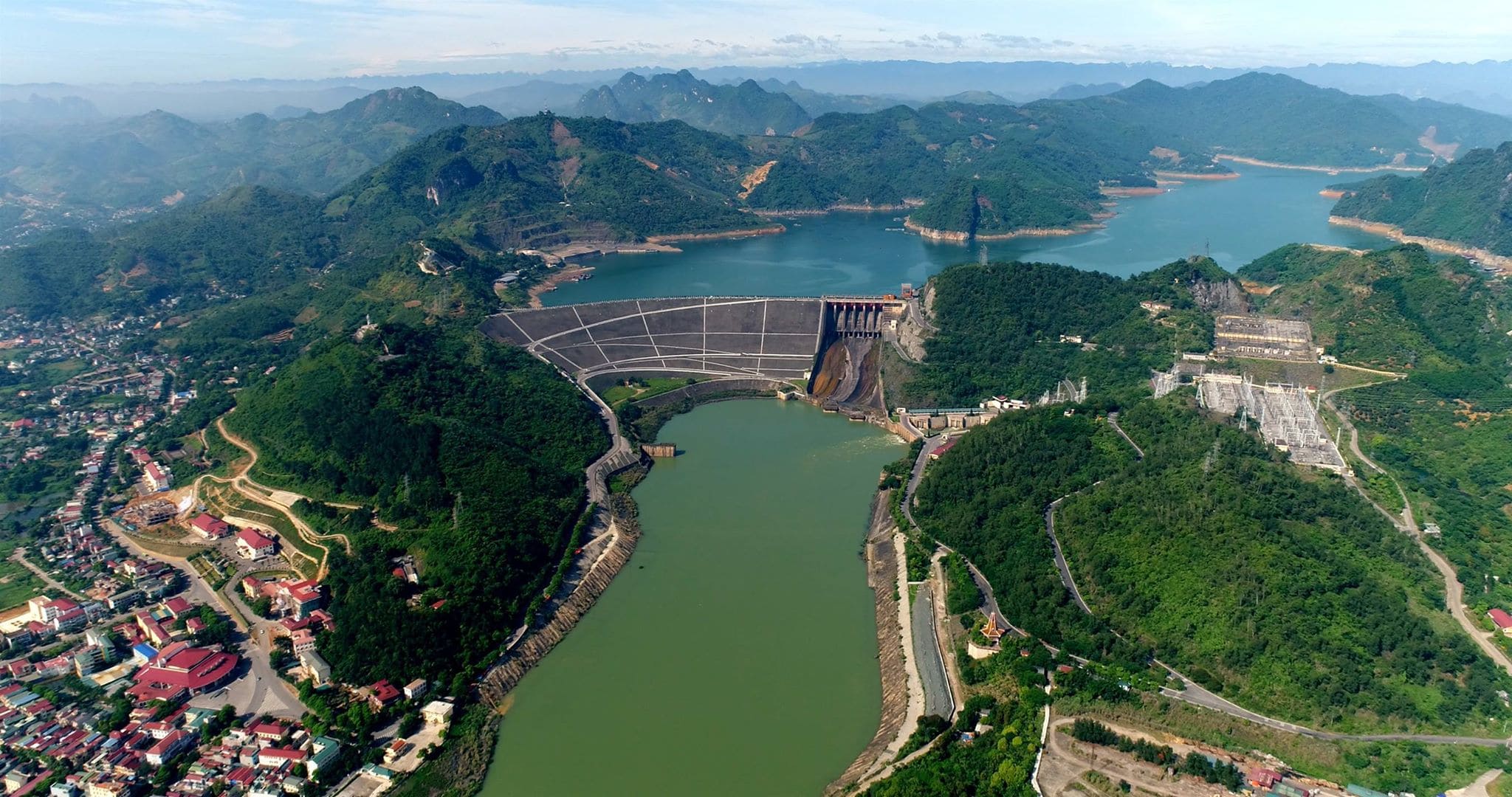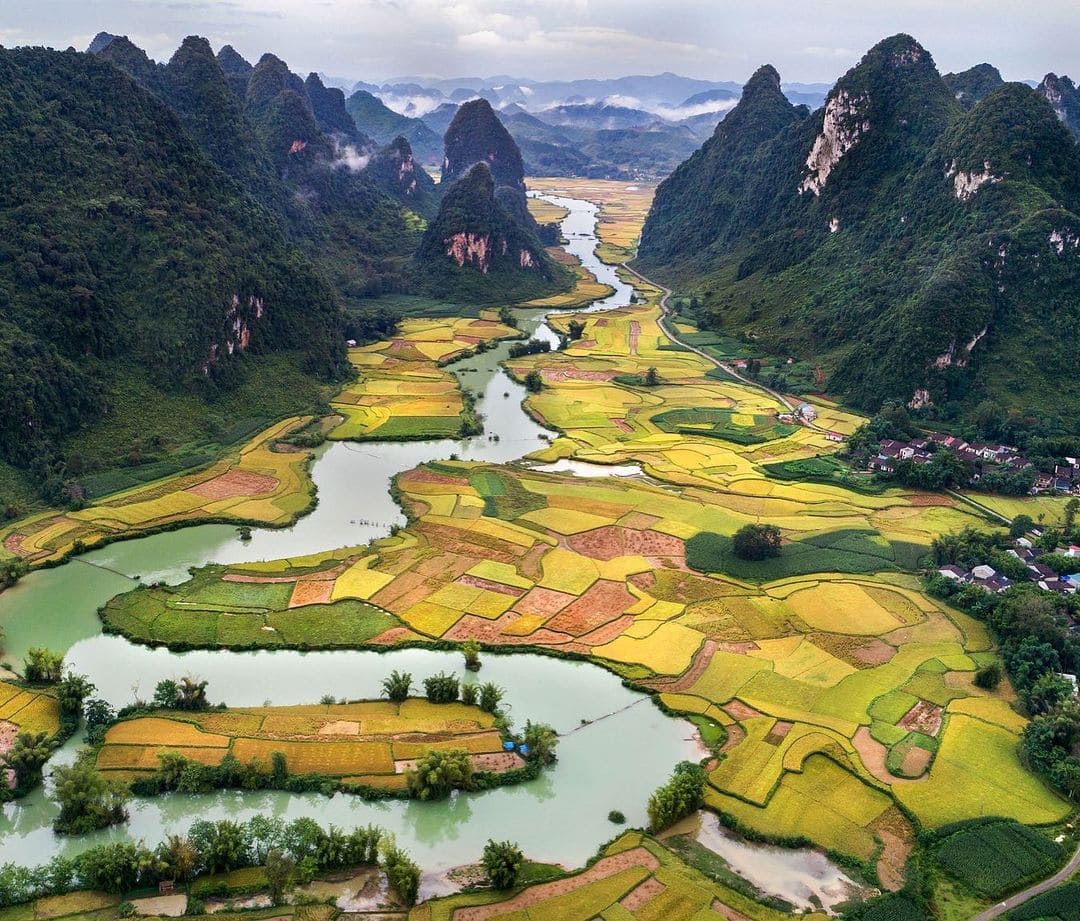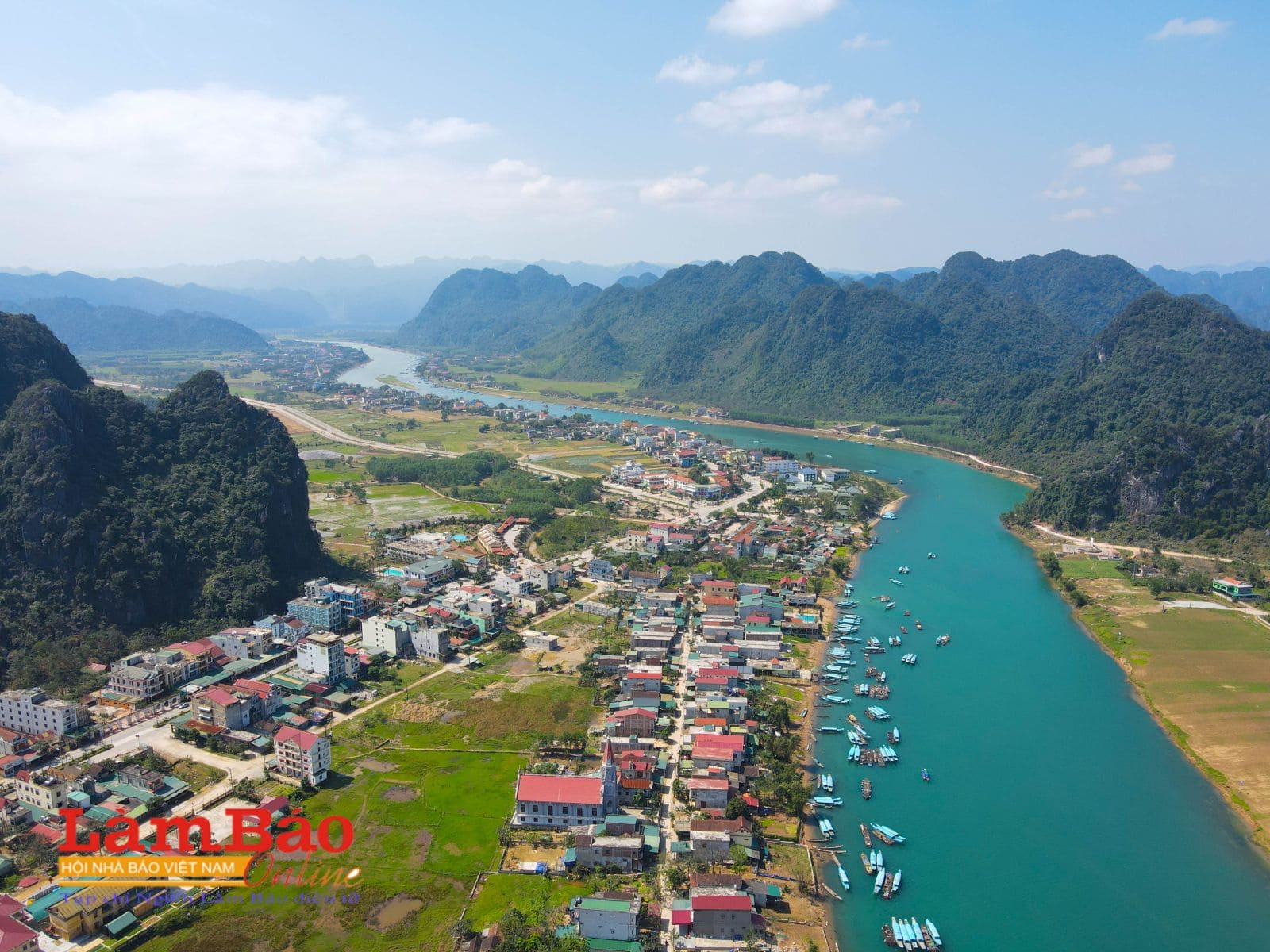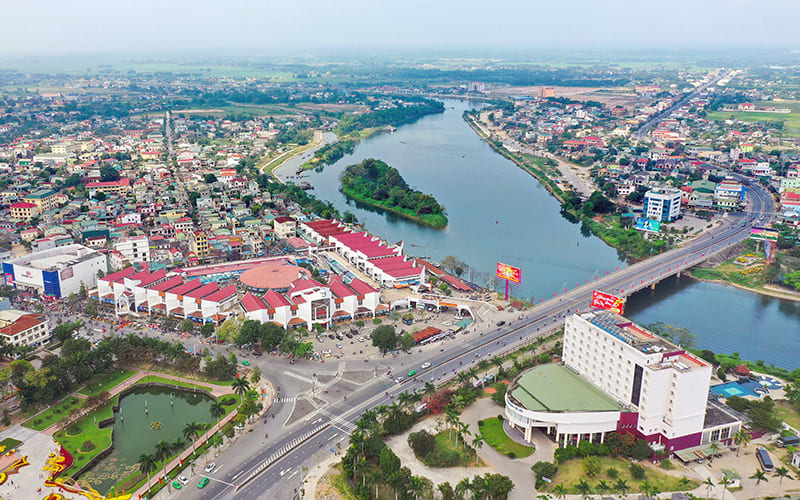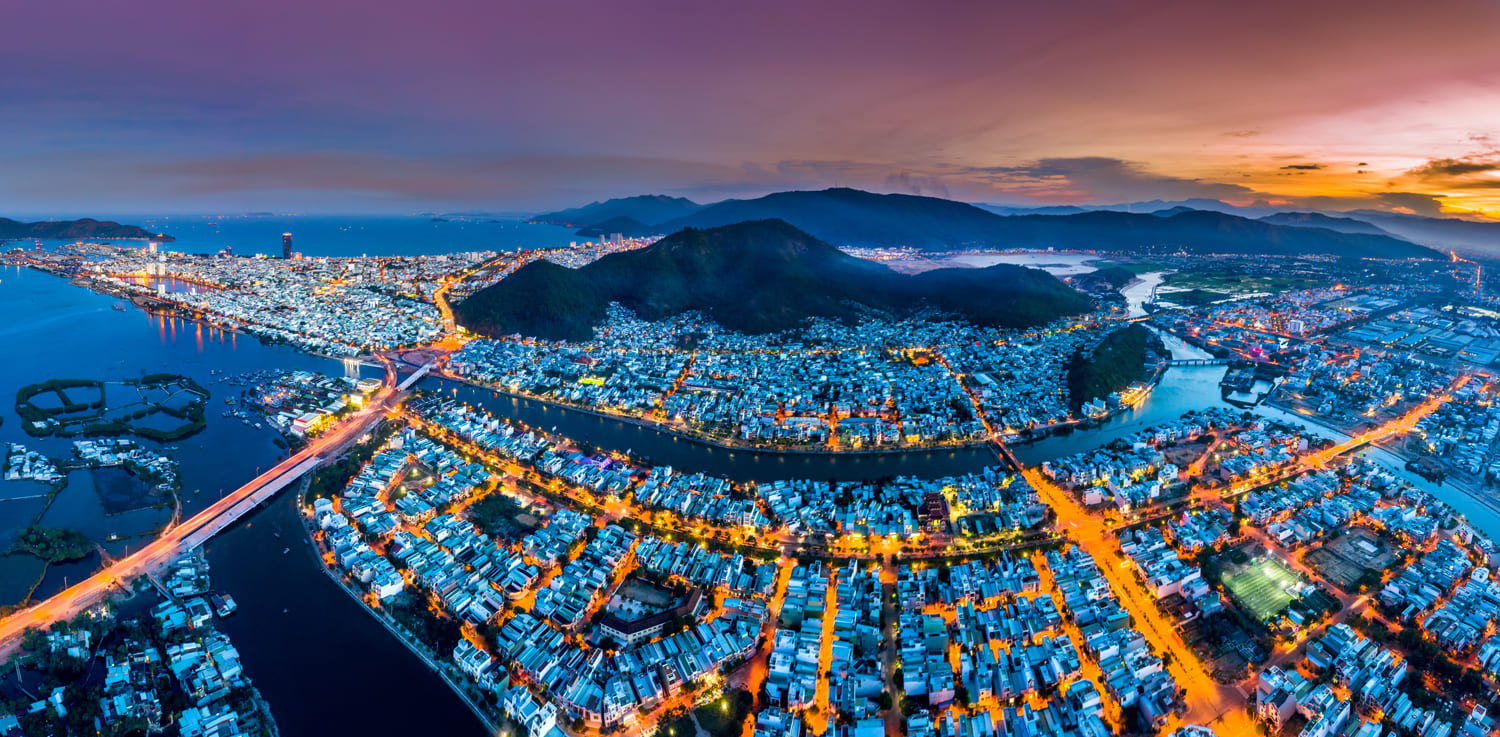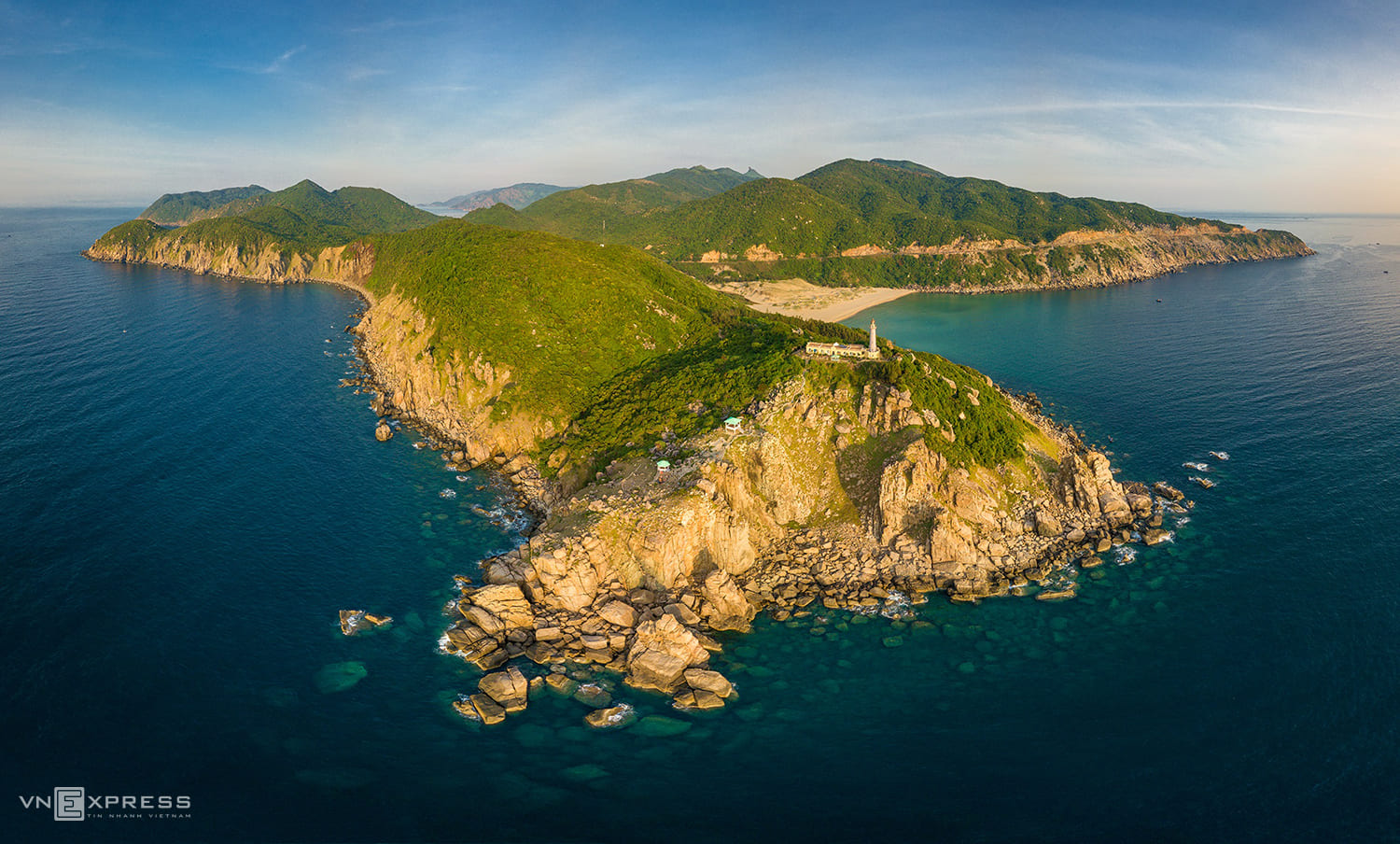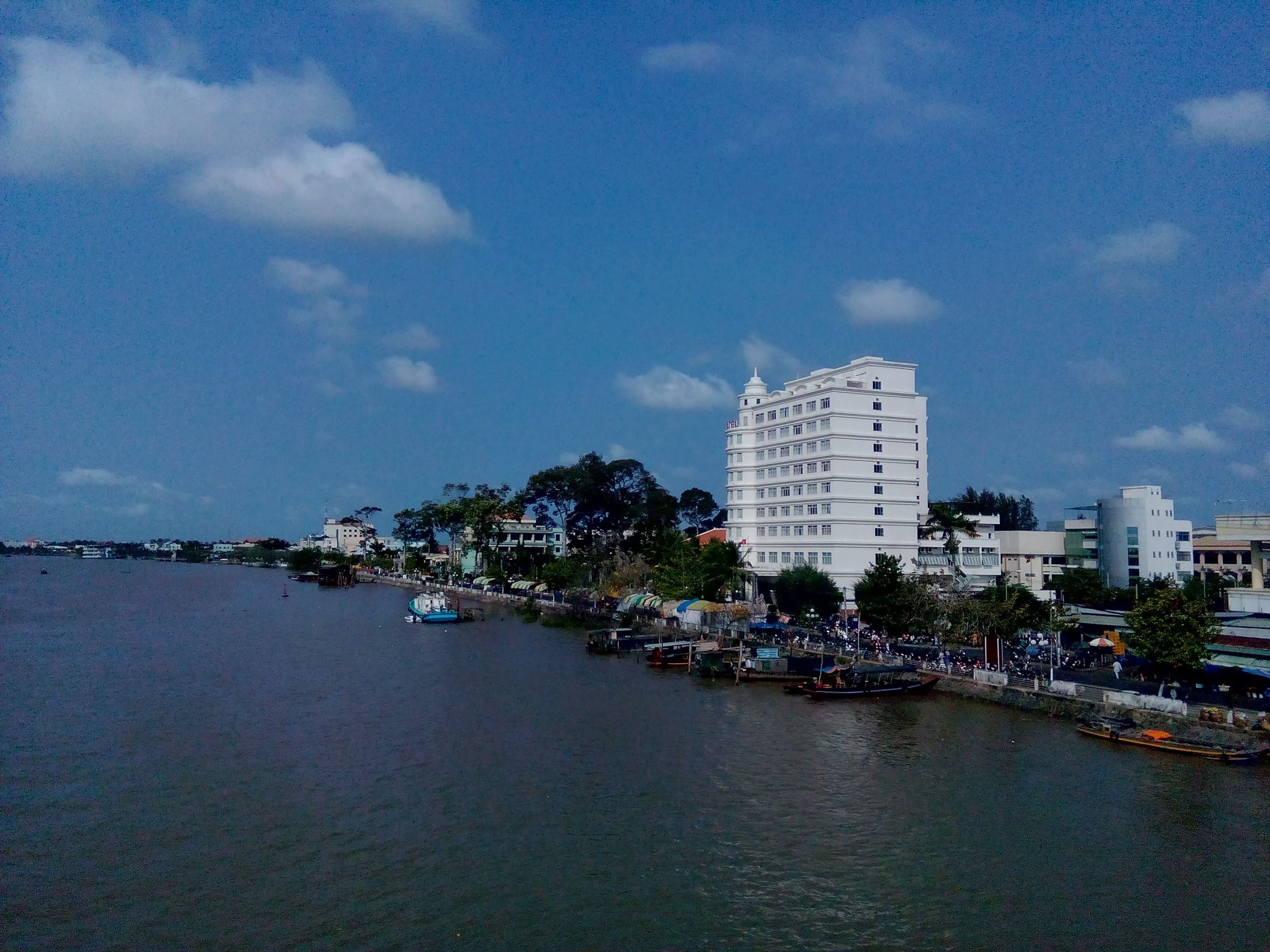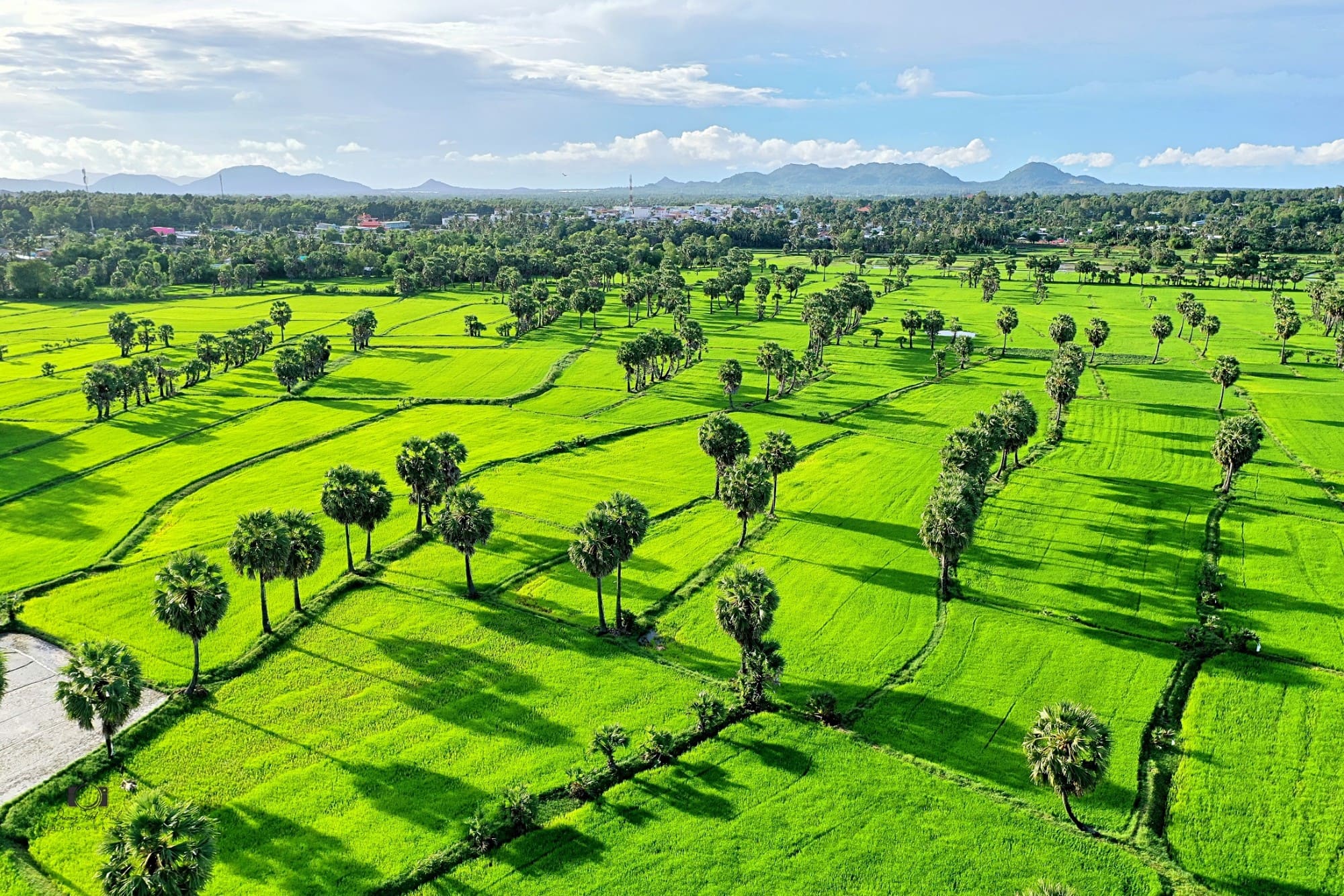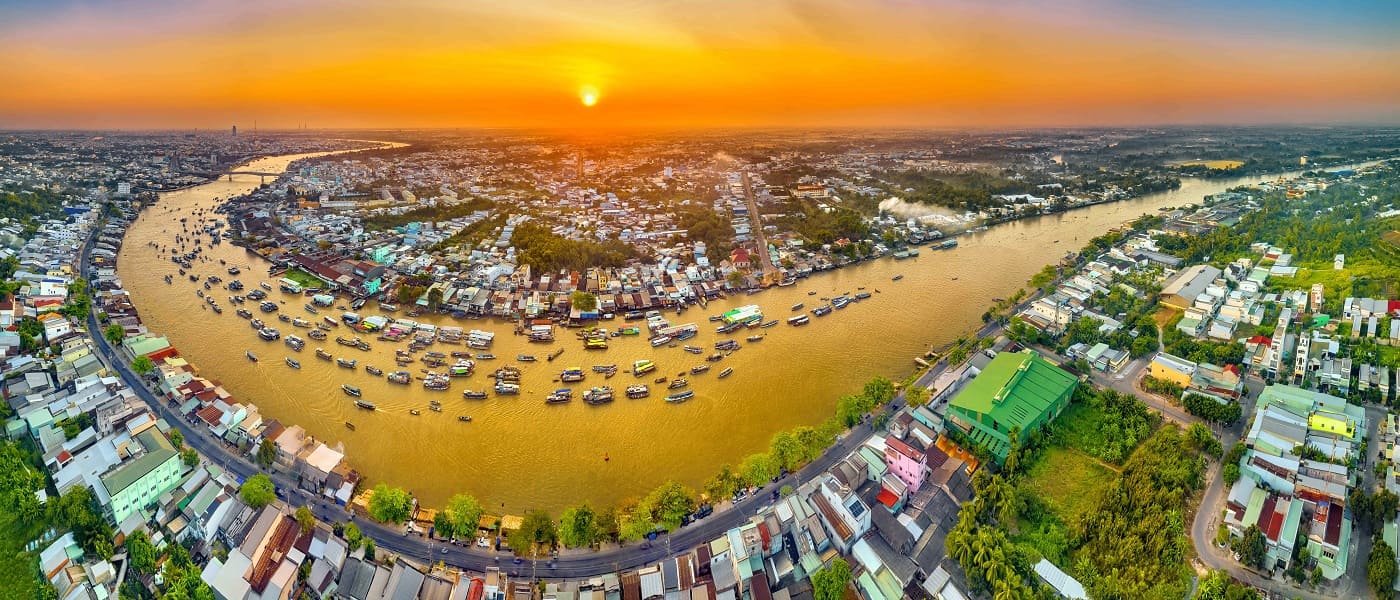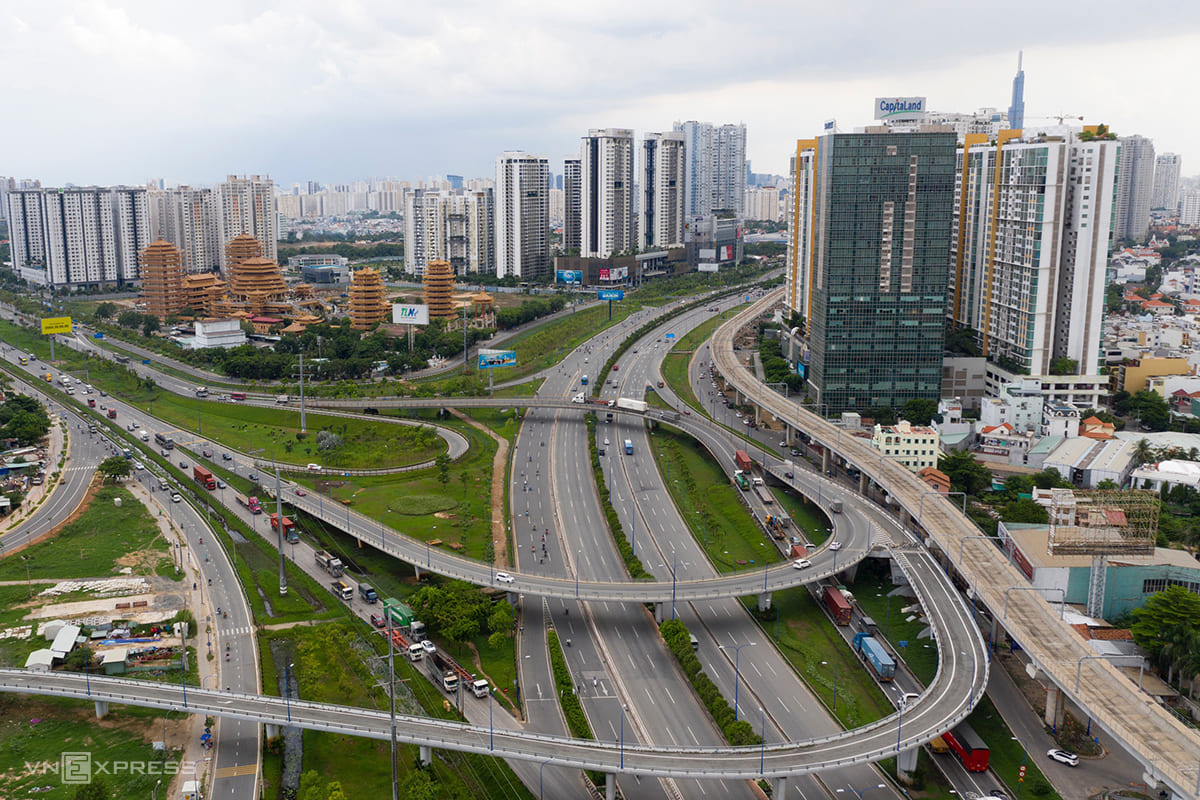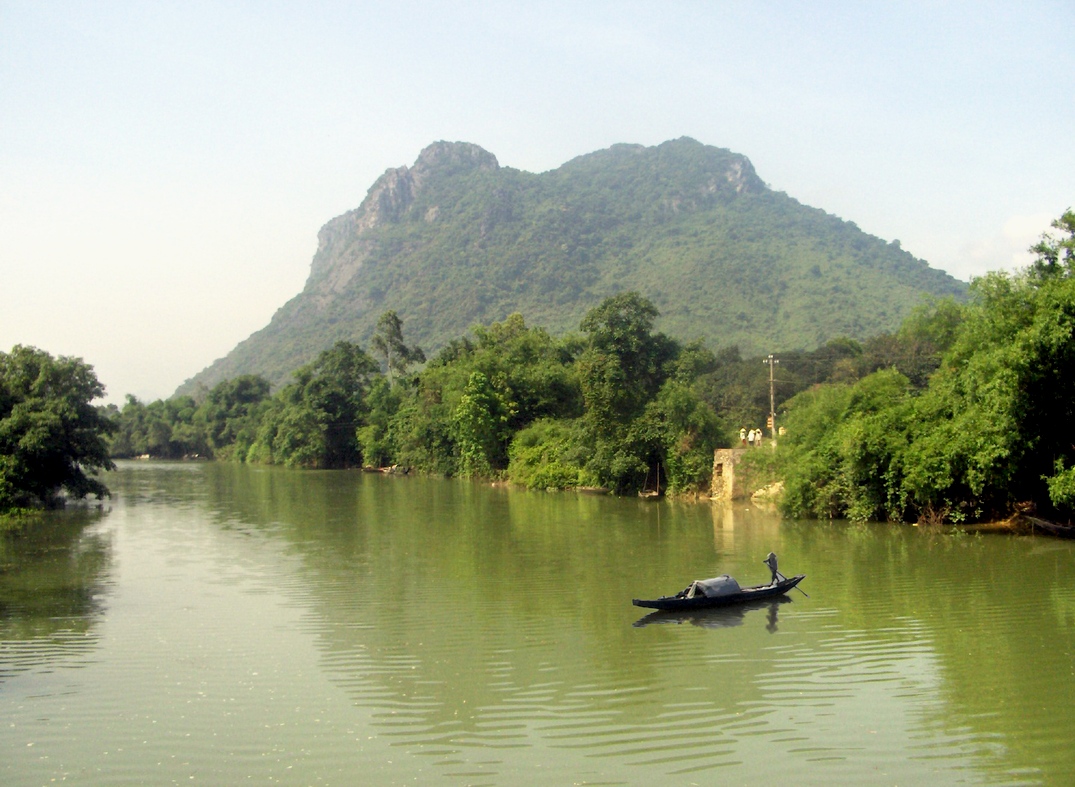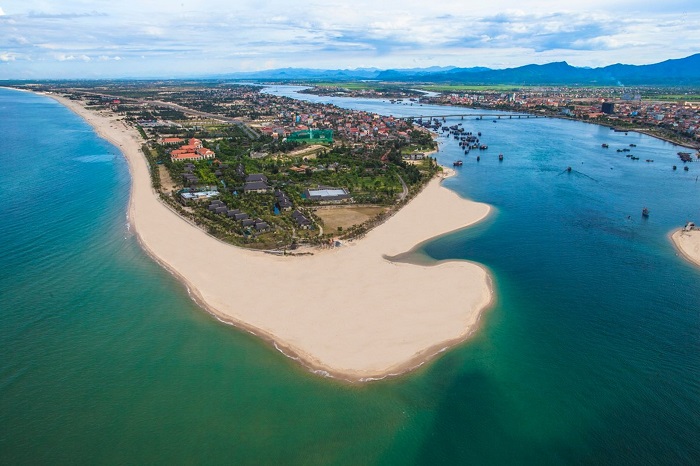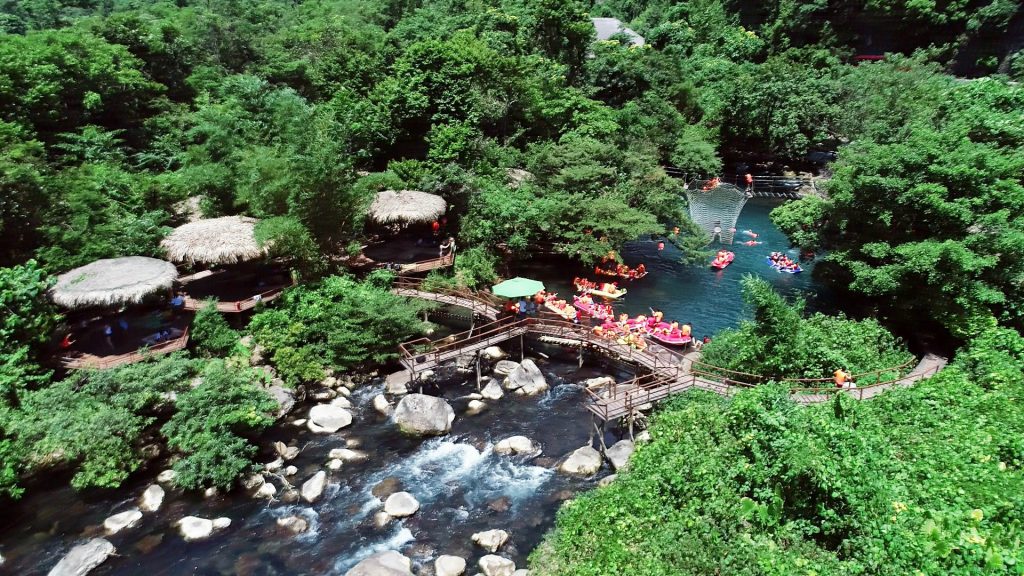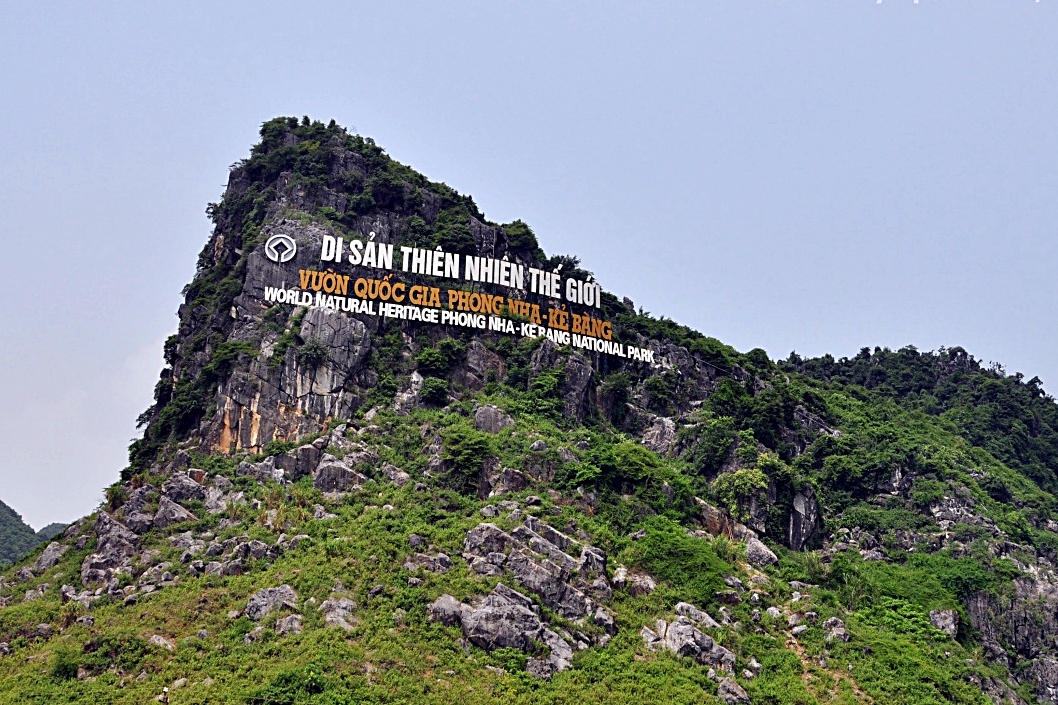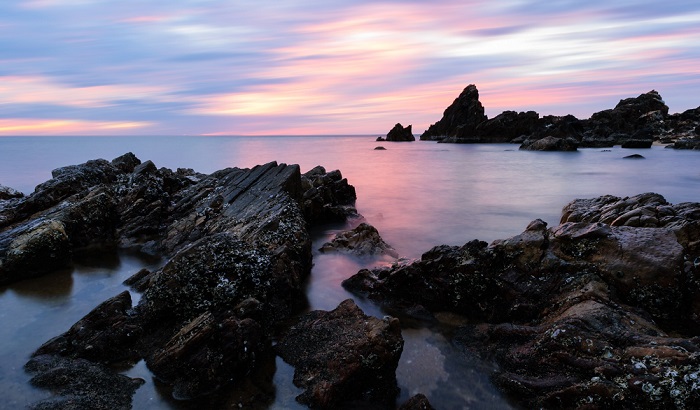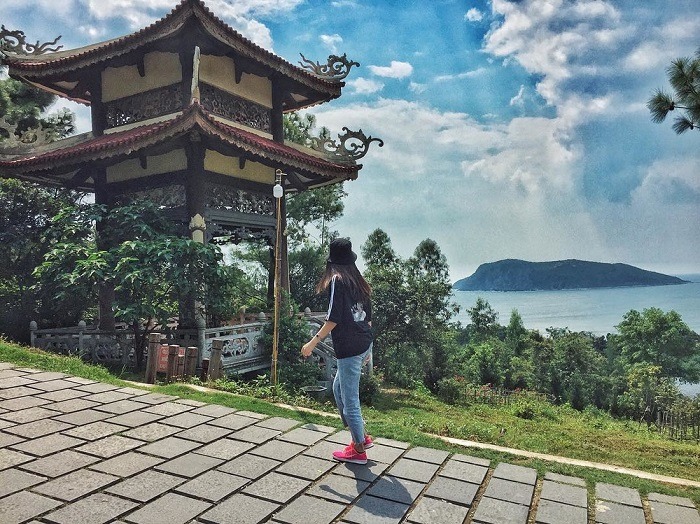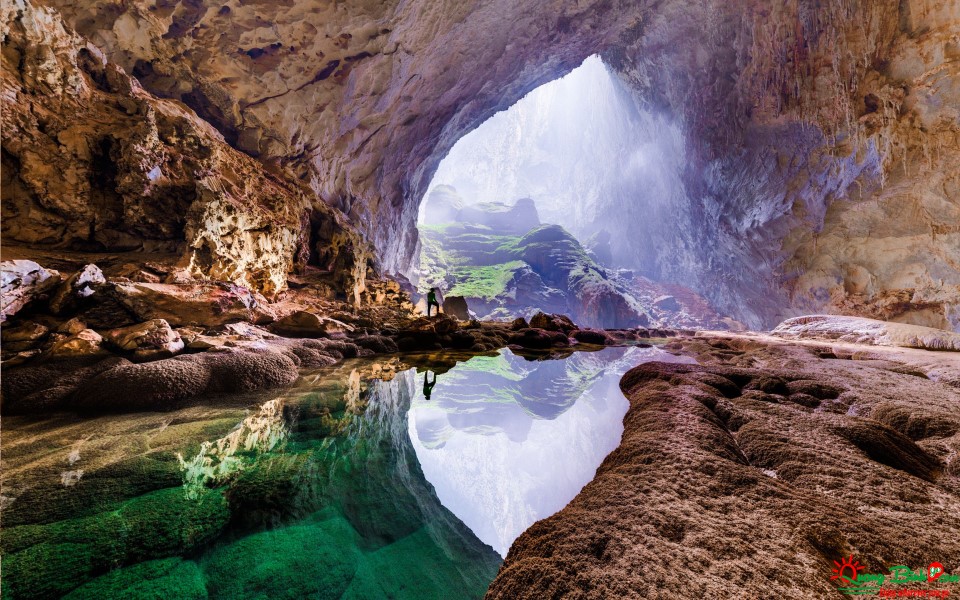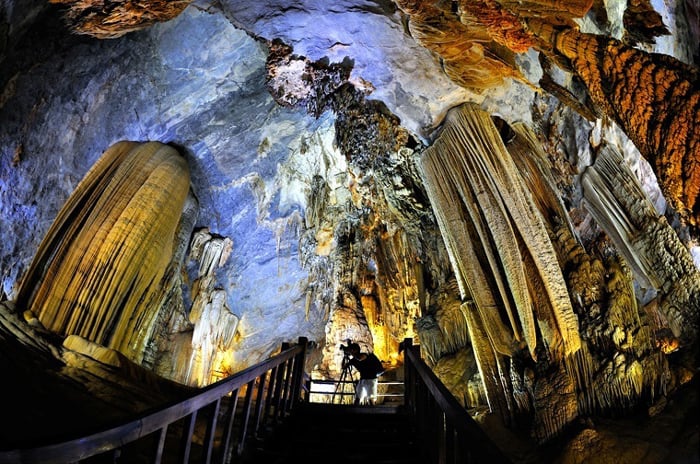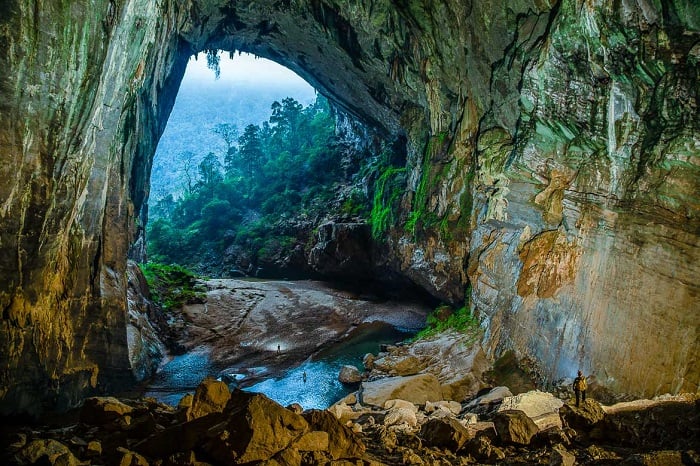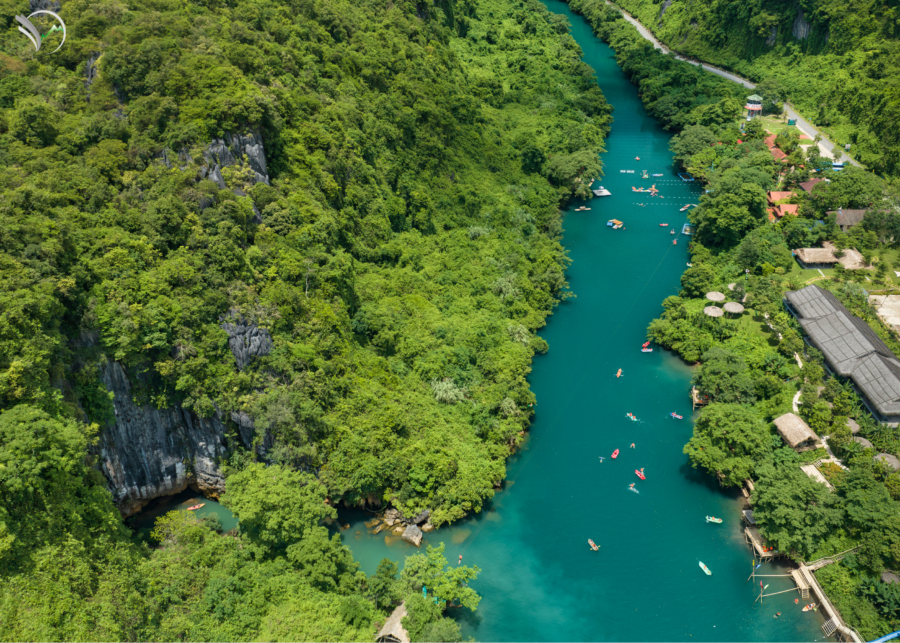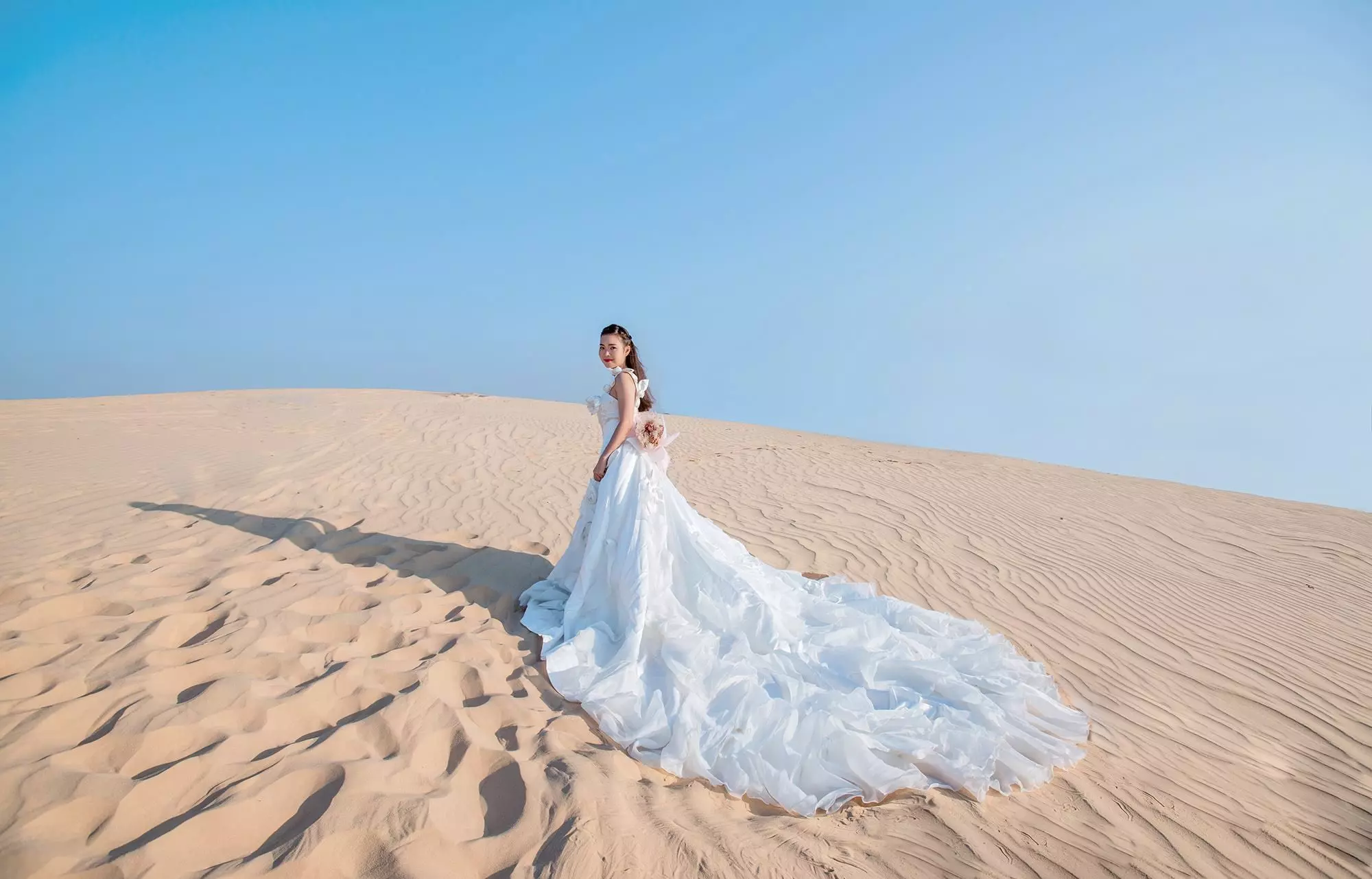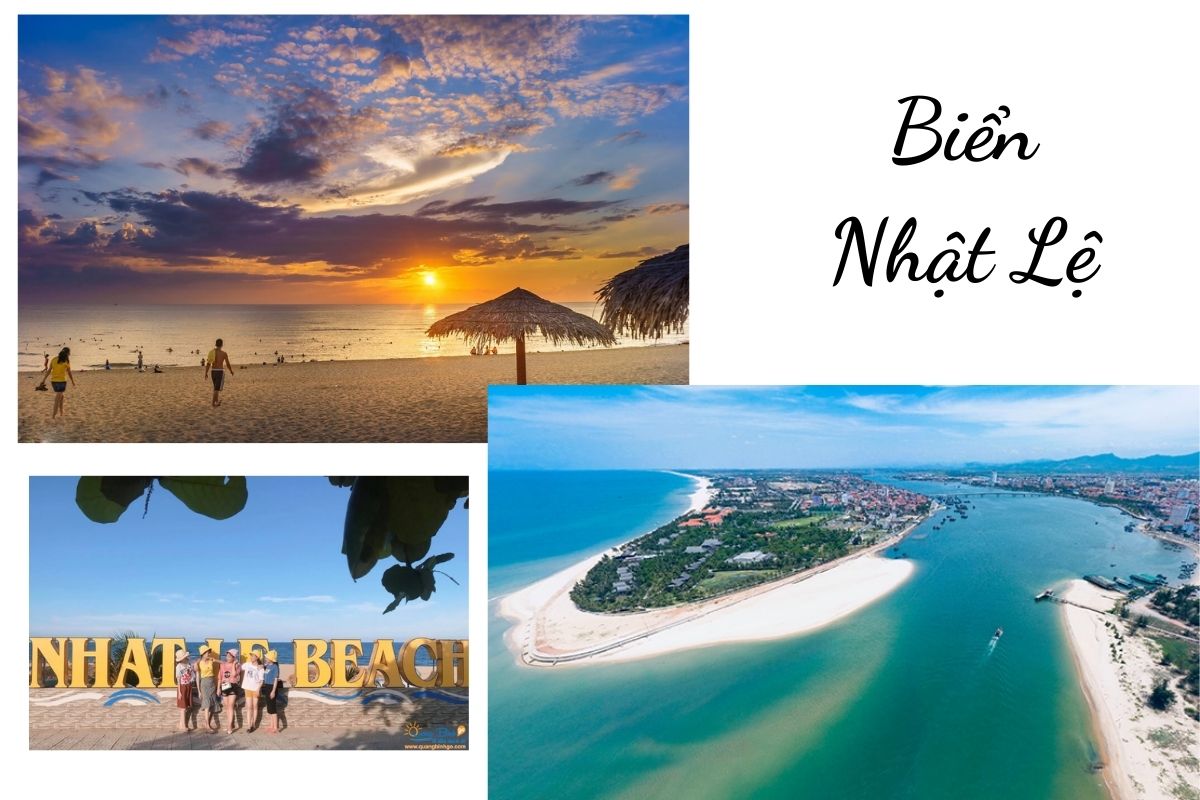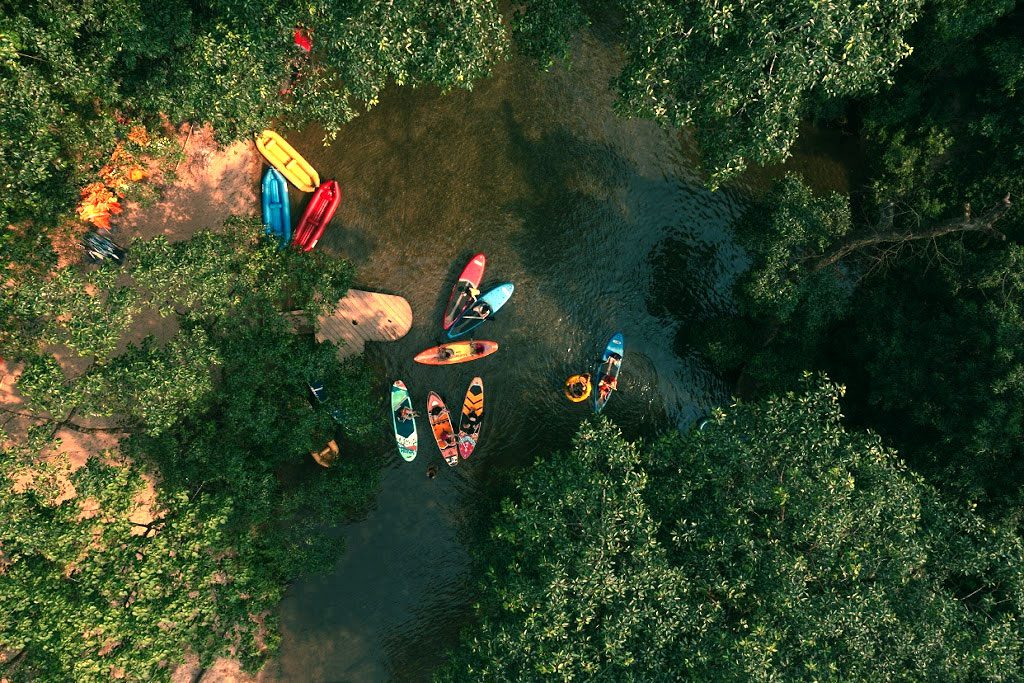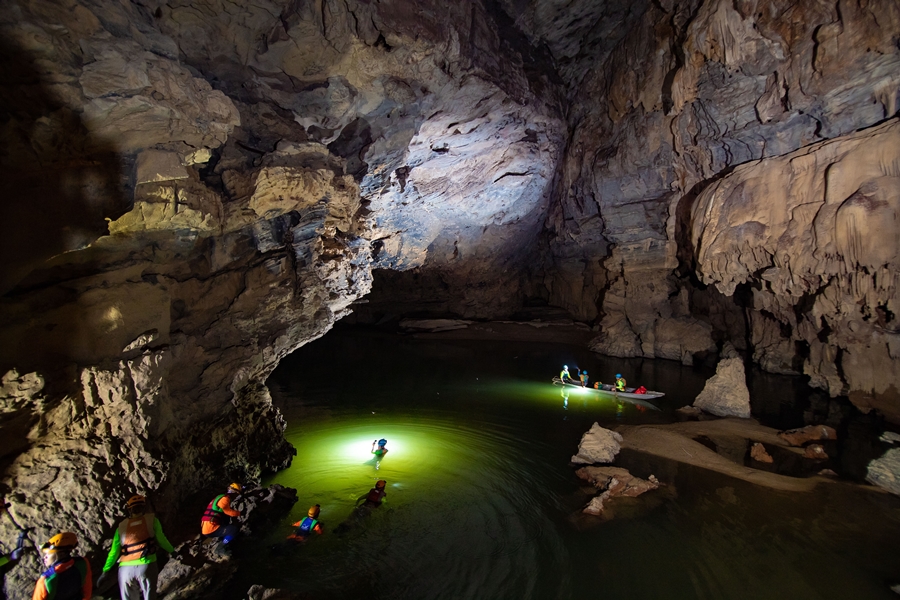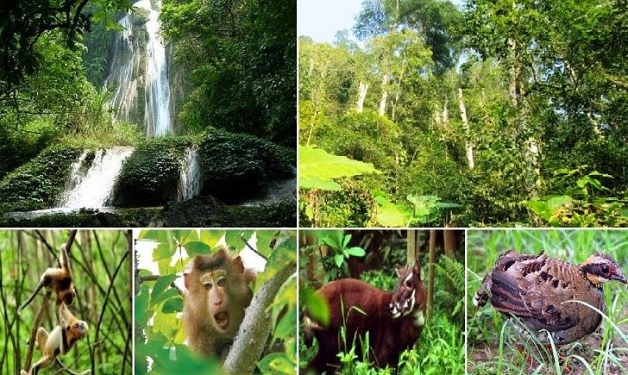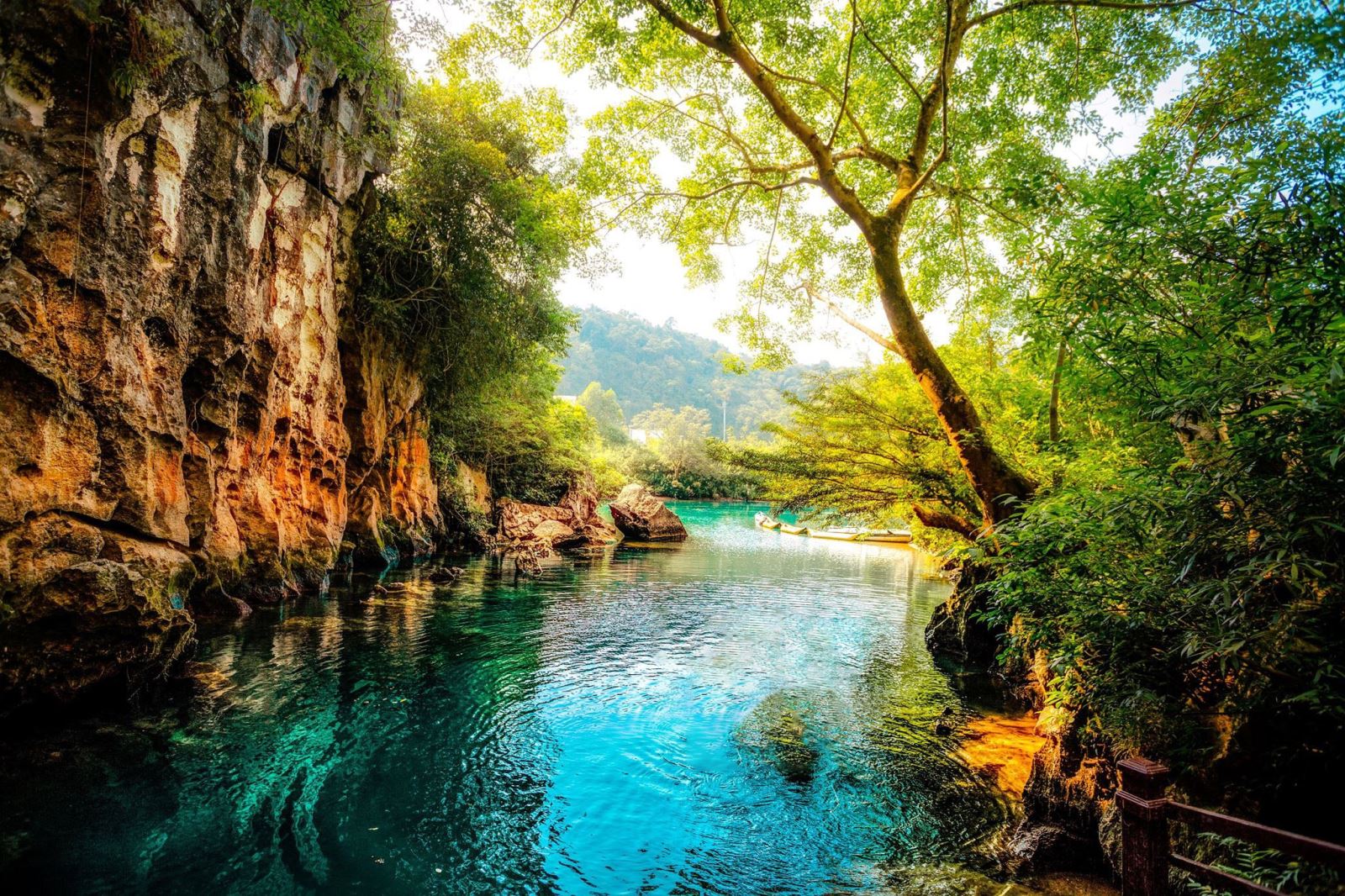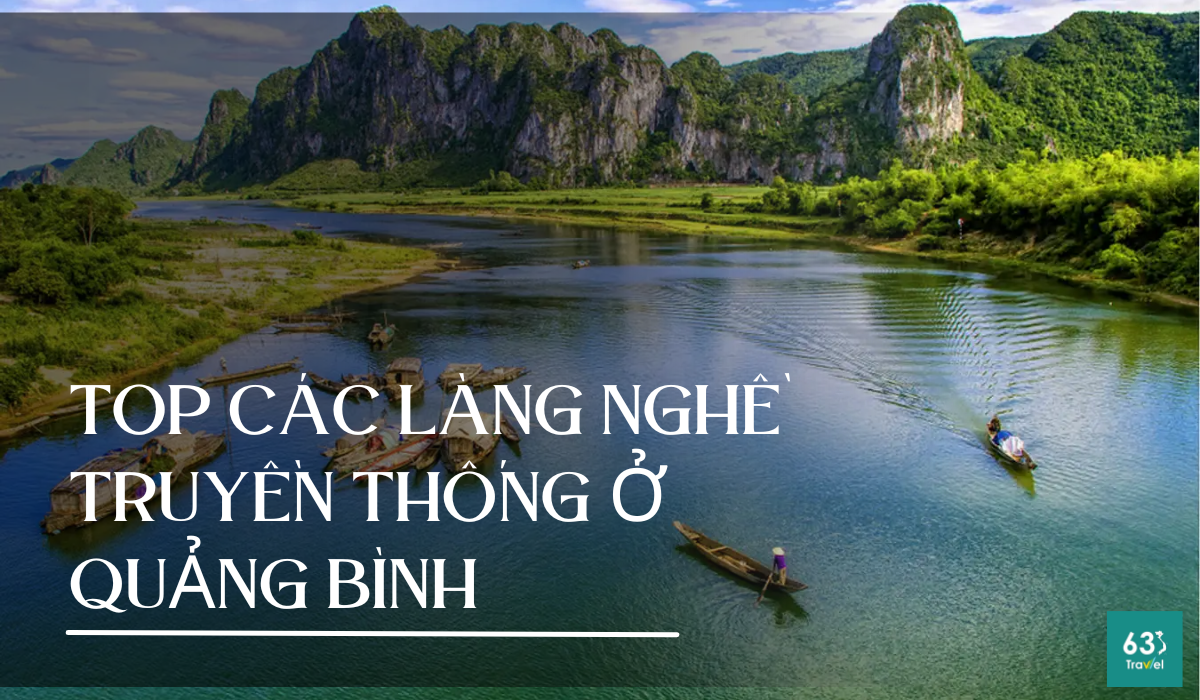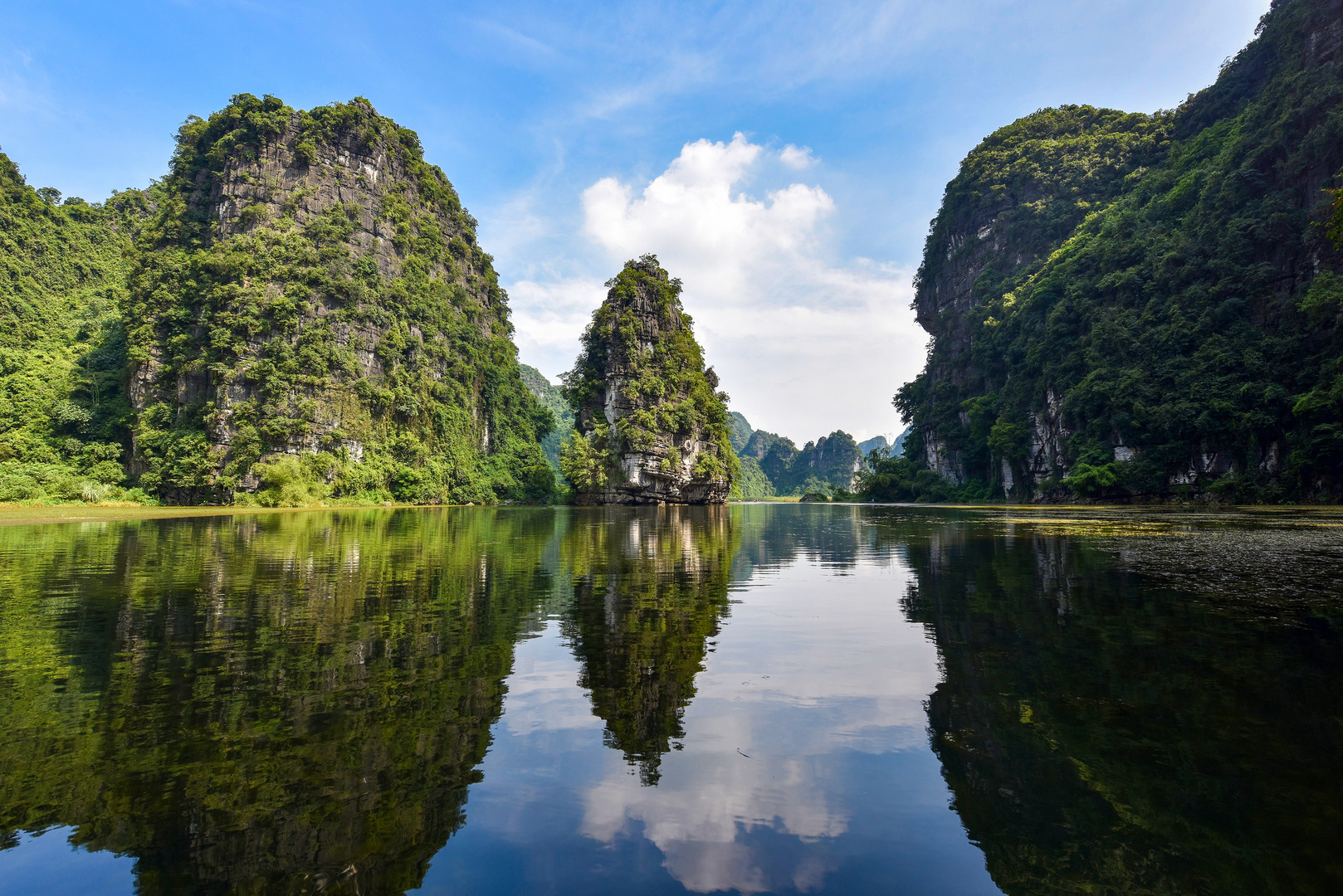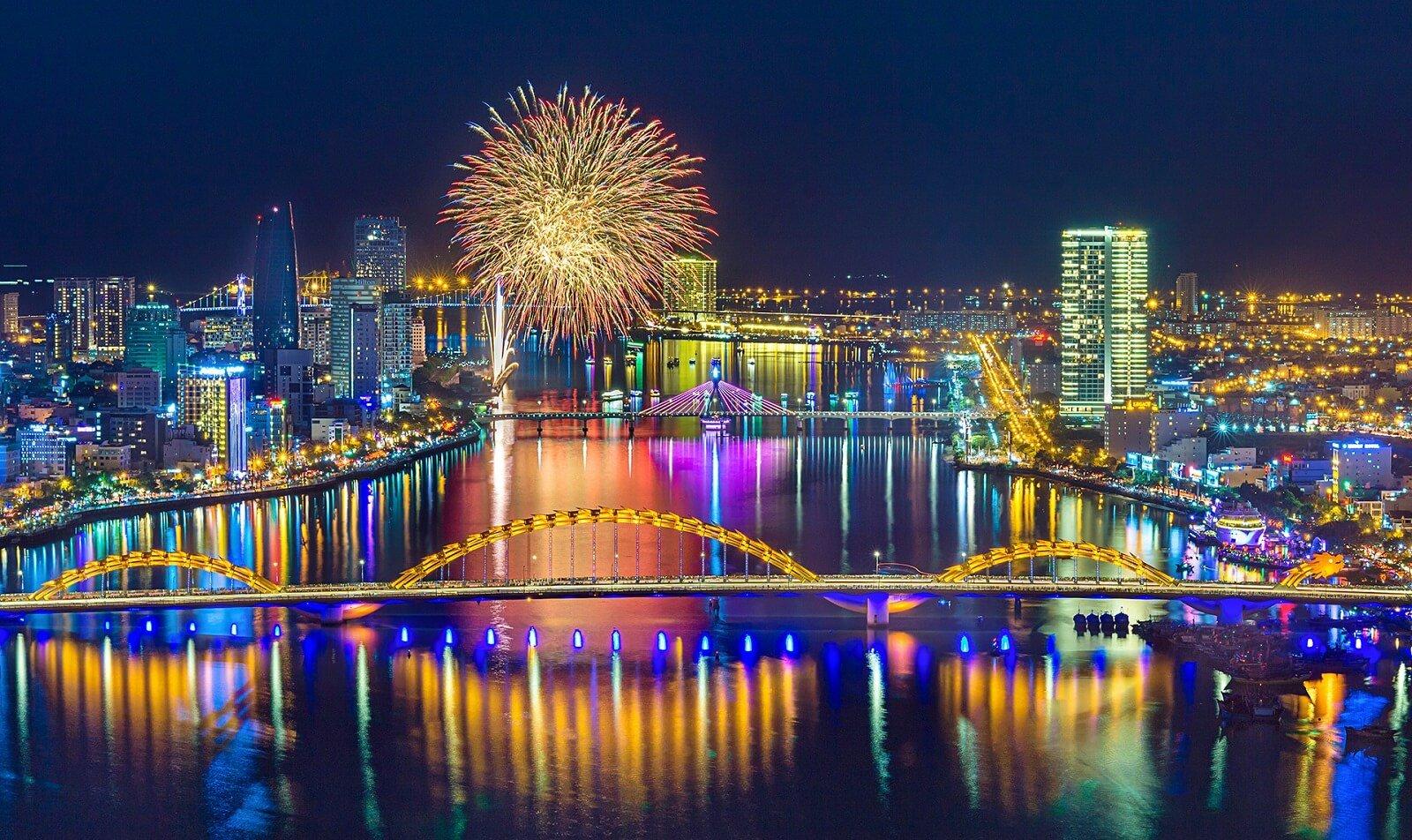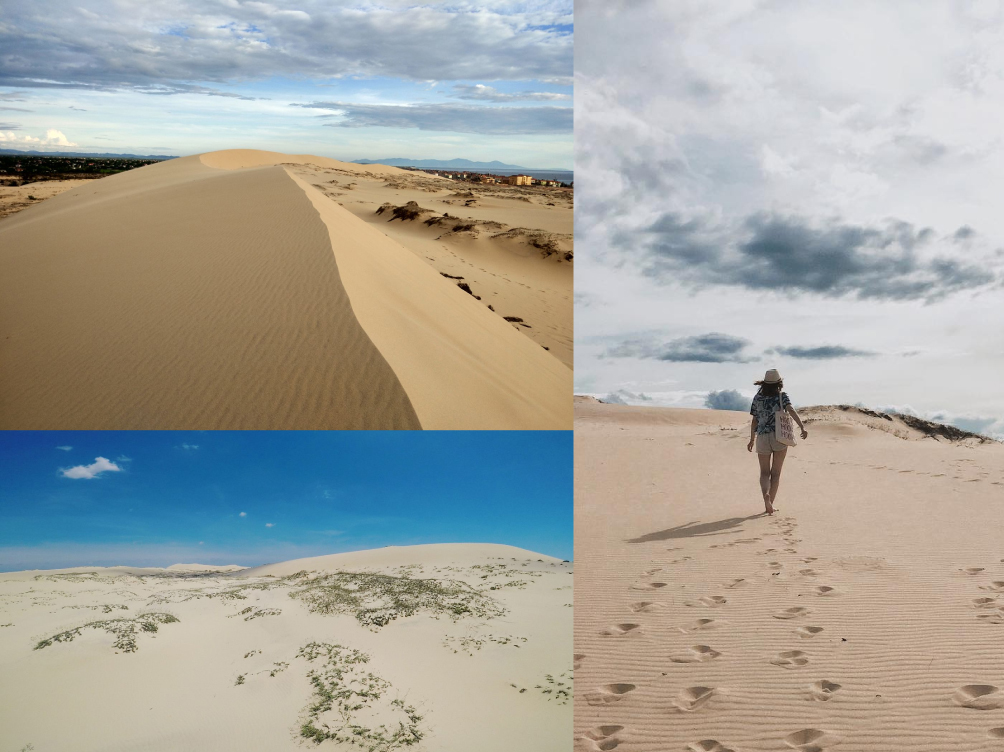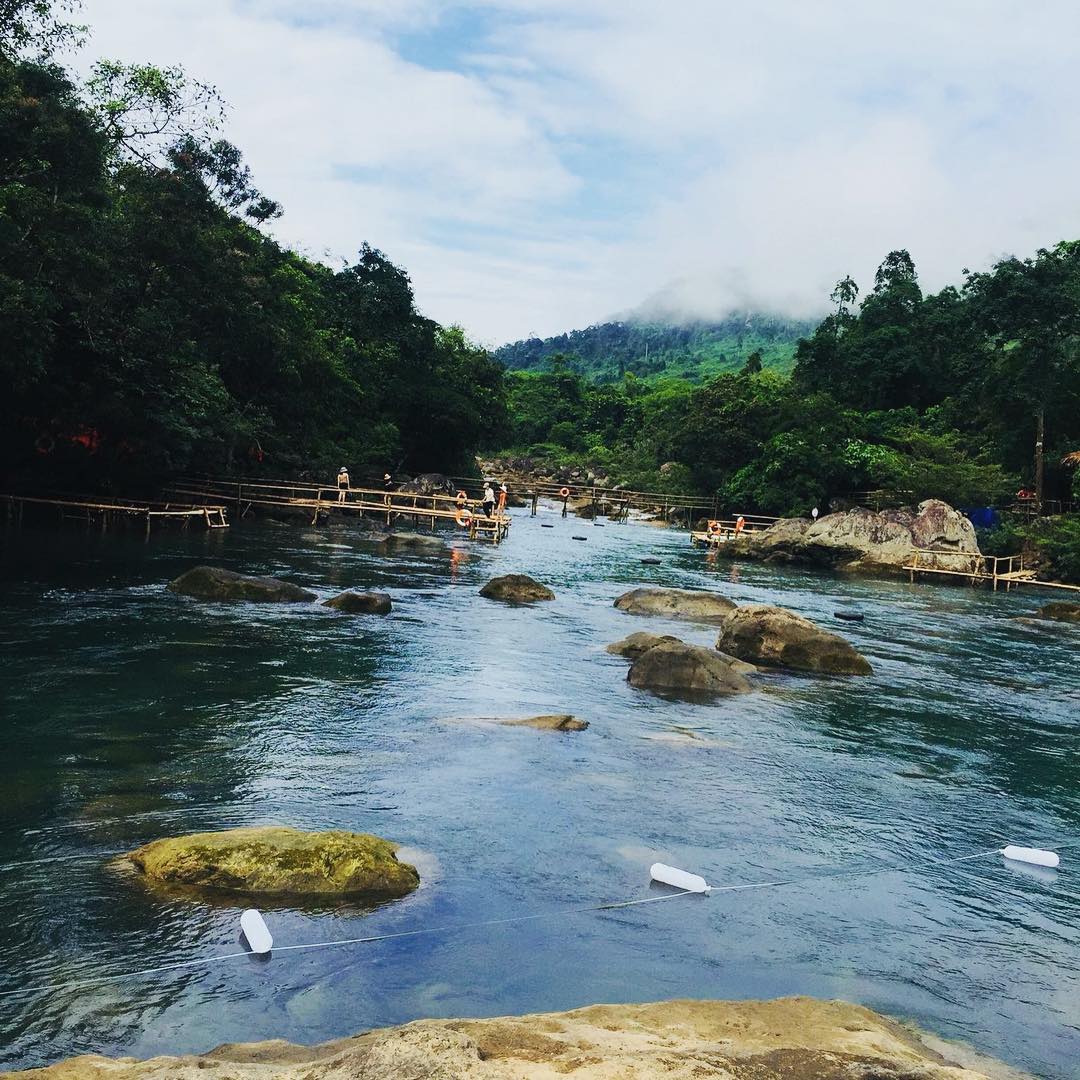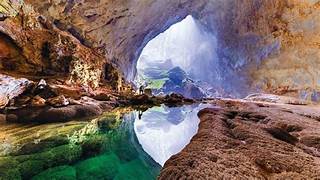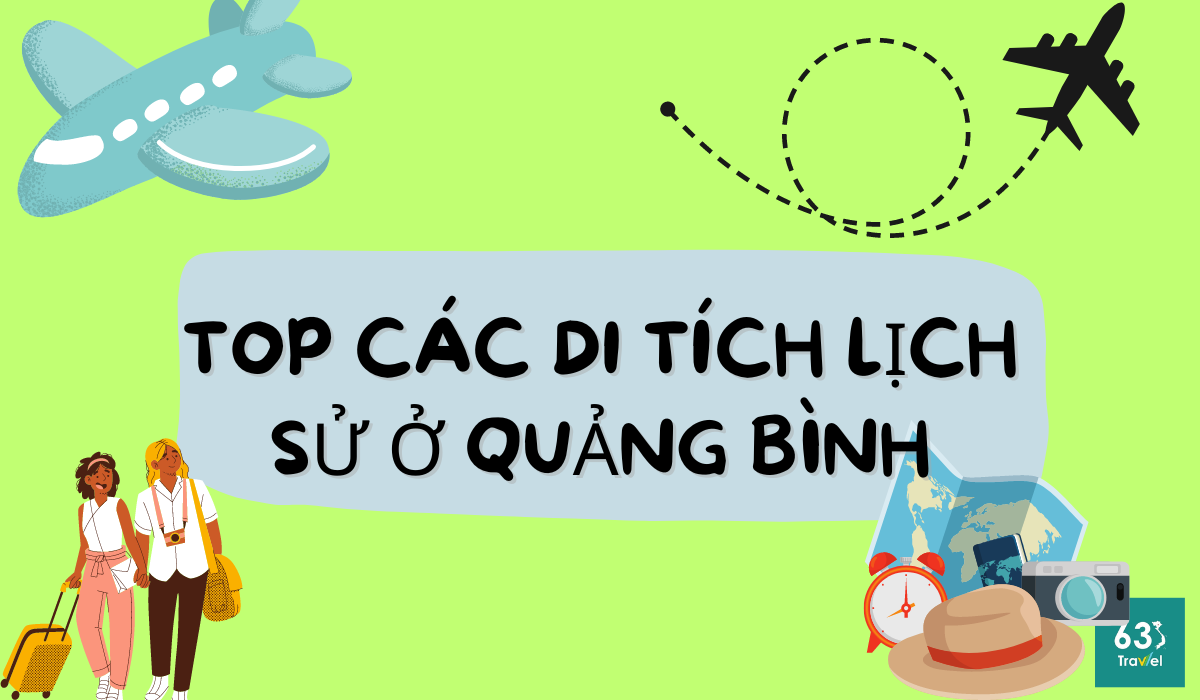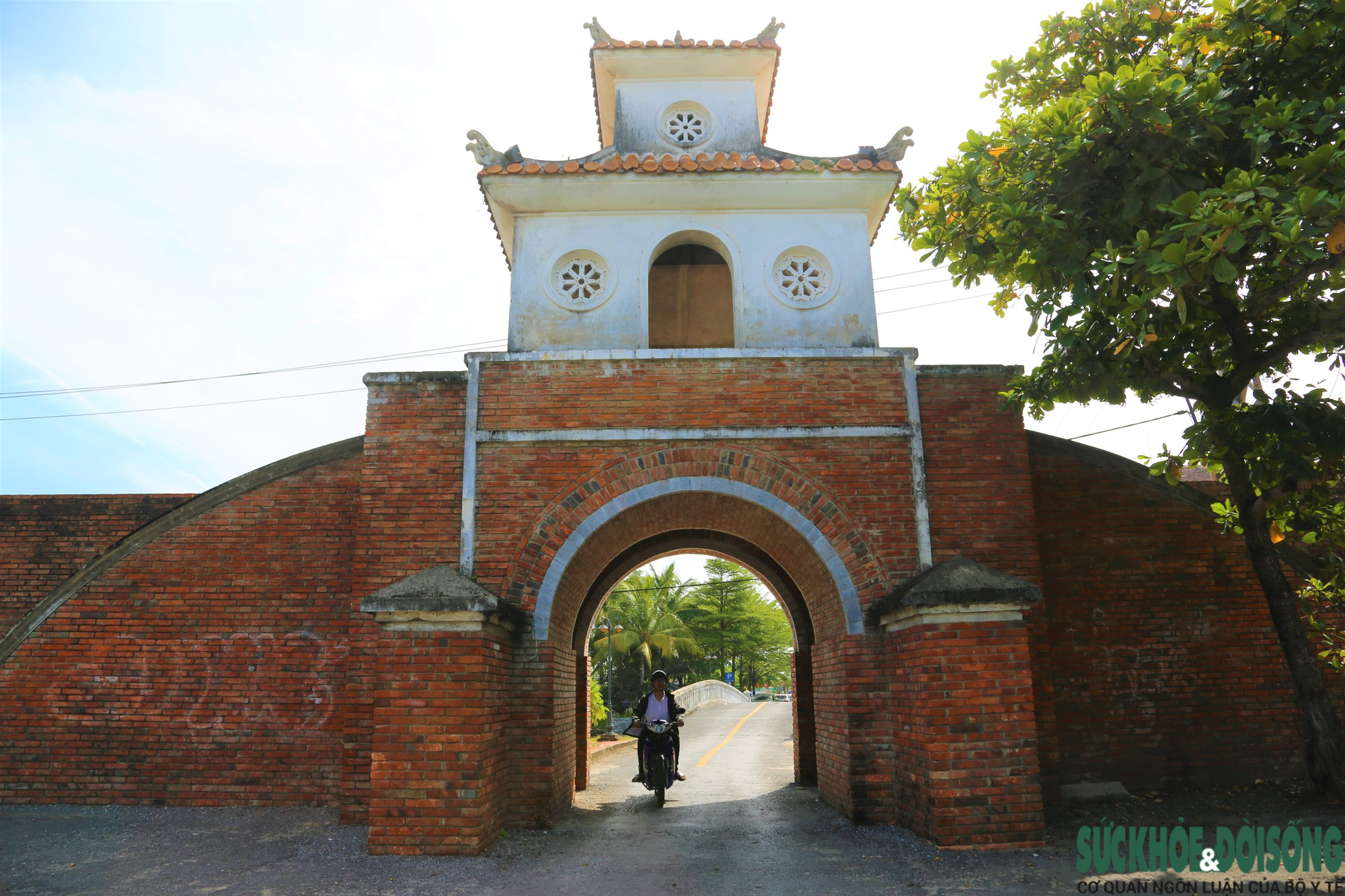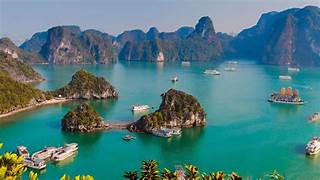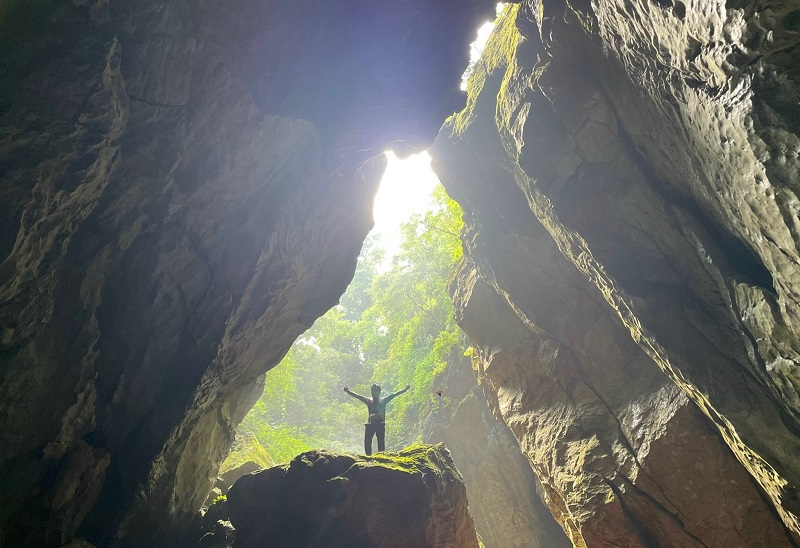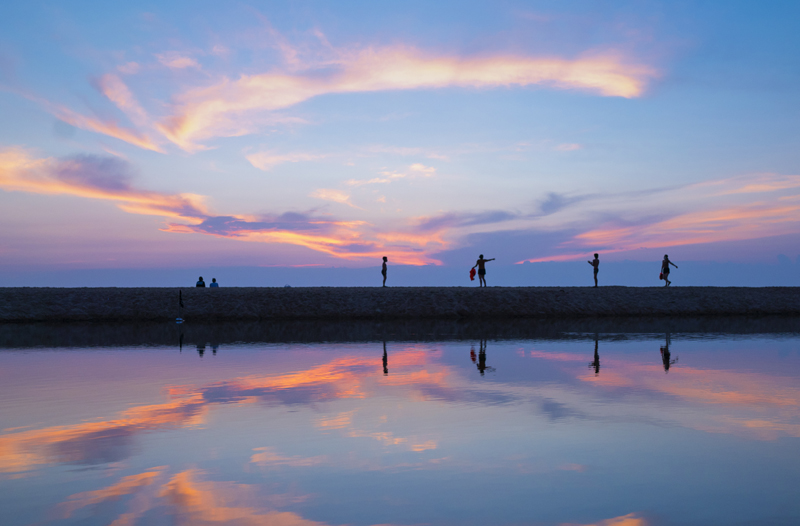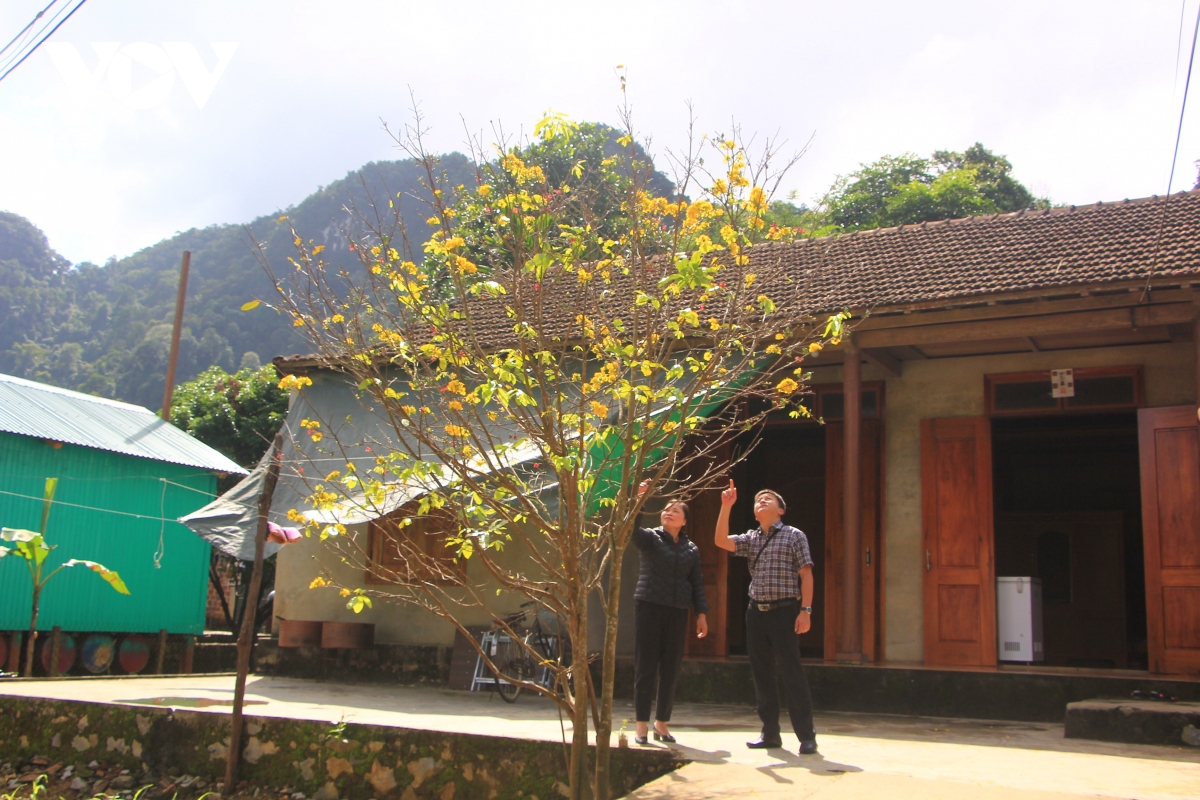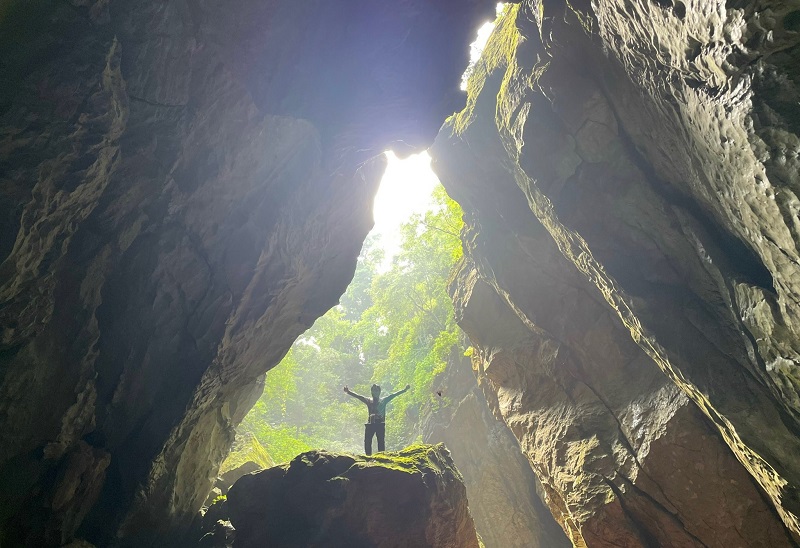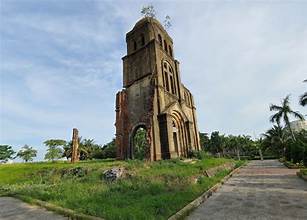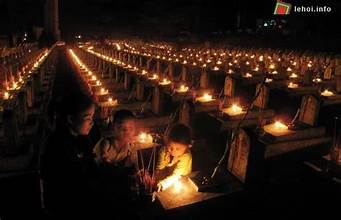After the Lunar New Year, tens of thousands of tourists go to Non Pagoda (also known as Than Dinh Pagoda) on the top of Than Dinh Mountain. Although no longer intact, Non Pagoda still carries many spiritual legends and was considered by ancient people to be a place of Buddha.
After the Lunar New Year, tens of thousands of tourists go to Non Pagoda (also known as Than Dinh Pagoda) on the top of Than Dinh Mountain. Although no longer intact, Non Pagoda still carries many spiritual legends and was considered by ancient people to be a place of Buddha.
In recent years, when Quang Binh province opened a stepped road to easily go up the mountain, Non Pagoda became a tourist destination sought after by many tourists after Tet. Because in addition to sightseeing and visiting sacred temples, coming here, visitors can also hear legends about Buddha and ancient historical stories.
Than Dinh Mountain is in Rao Da village, Truong Xuan commune (Quang Ninh district, Quang Binh), more than 30km southwest of Dong Hoi city. The mountain has an altitude of 405m above sea level. Traveling on Ho Chi Minh Road (east branch), arriving at An Ninh commune, there is a fork turning to the West, about 8km away, you will reach the foot of Than Dinh mountain. From the foot of the mountain to the top, visitors have to climb over 1,260 stone steps, many of which are preserved in the past. When climbing over, visitors can still see the footprints of their ancestors...
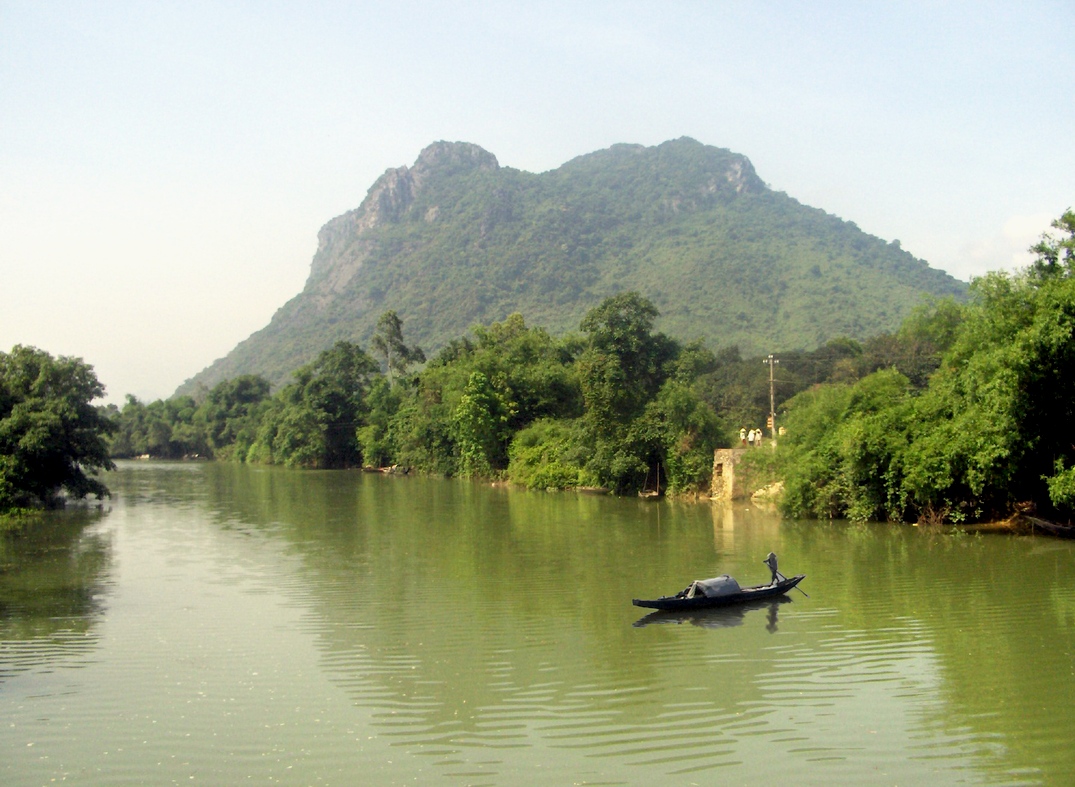
The picturesque beauty of Than Dinh mountain seen from the Dai Giang river.
Following the stone road, we climbed Than Dinh mountain. The road to Than Dinh, although now paved with stone steps, is still built on the old path, so it zigzags across the mountainside, with luxuriant trees on both sides. The higher you climb, the cooler the air becomes with the spring sea breeze blowing. Up to the highest step, standing on the mountain looking to the East, is a large plain of Quang Ninh district and Dong Hoi city, with the Dai Giang river (also known as Long Dai, the source of Nhat Le river). It curves very charmingly under the railway bridge and Long Dai road bridge - a "fire coordinate" during the war against the US - then enters the Nhat Le river section to flow into the Nhat Le river estuary.
Also standing on the top of Than Dinh mountain, looking down you will see a section of the Ho Chi Minh trail crossing the Dai Giang river, the whole land seems to turn into a vibrant watercolor painting. The Rao Tru and Rao Da rivers around Than Dinh also bend and appear at the foot of the mountain, between banks of lush green trees. From the highest peak of the mountain looking towards the sea, far away we can still see the hidden appearance of an urban area of Dong Hoi city and the sea as far as the eye can see.
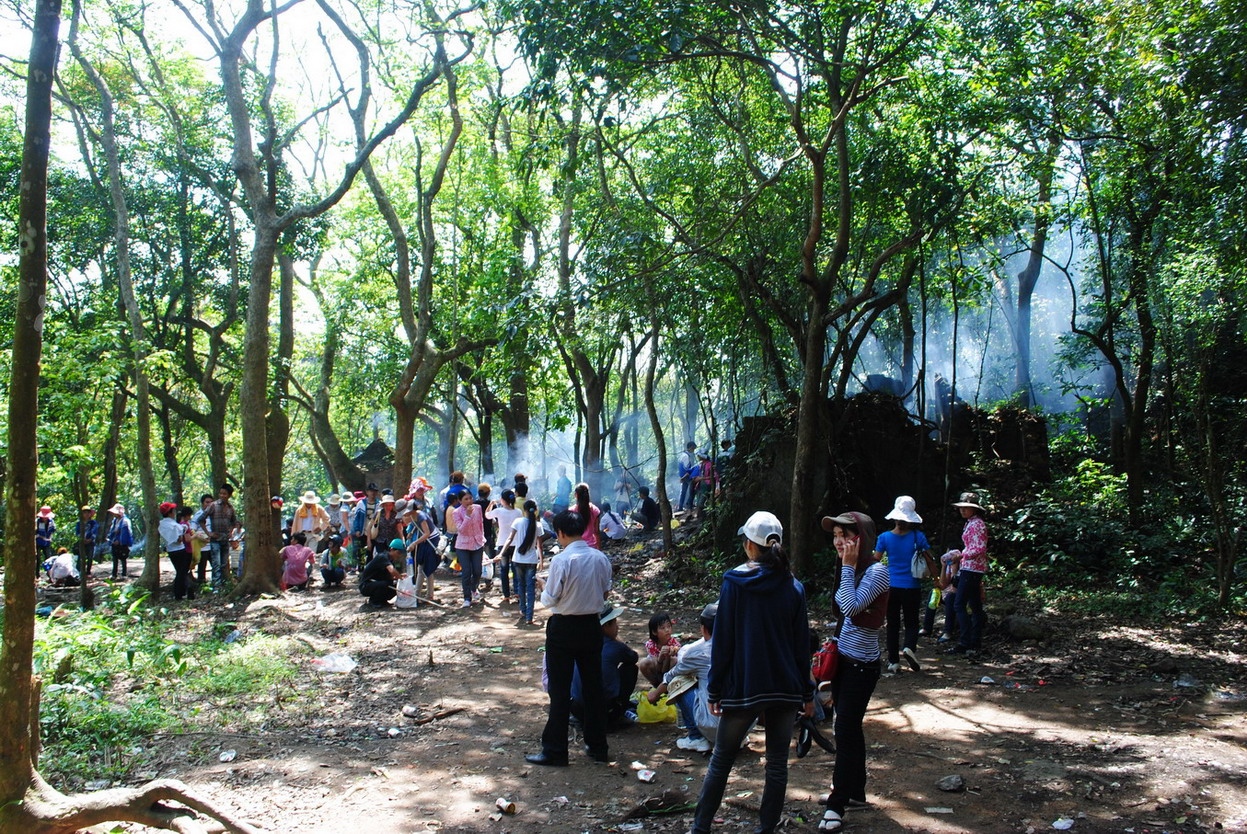
A stream of people followed each other to conquer the trail leading to Non Pagoda.
On top of Than Dinh, there is a flat area of land, about 400 square meters wide, with large forests, which is where the ancients chose to build the Non pagoda. Through many years of sun and rain, many relics of the ancient temple still remain on the mountain. The ancient pagoda had eight compartments, now only the stone walls, doorways and altar full of moss remain. On that flat land, there are still intact small shrines, hidden under shady trees, next to ancient trees. On the day when many tourists go to the mountain, the scene of ruined temples and pagodas hidden in the drifting incense smoke looks magical.
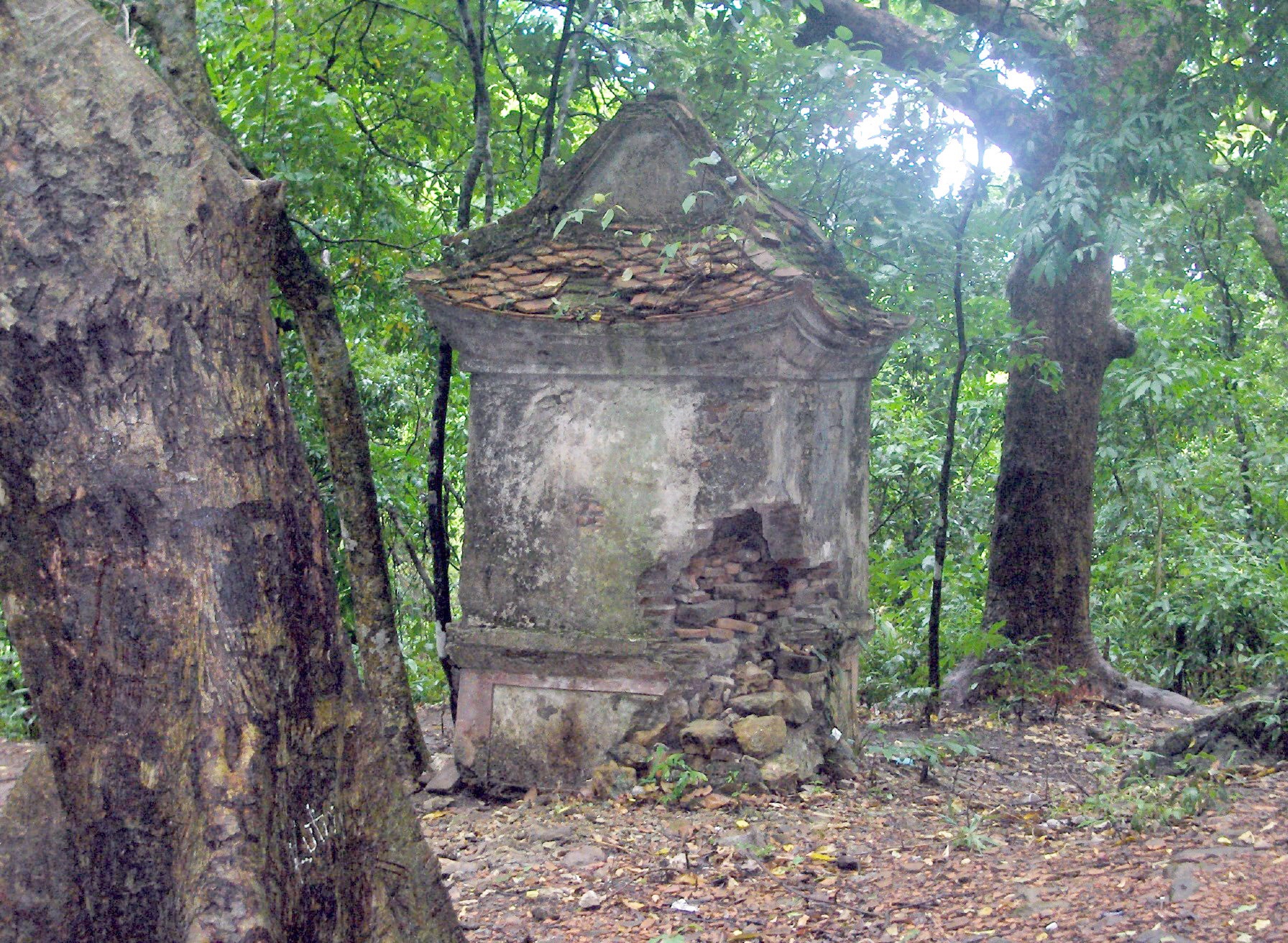
A small temple remains.
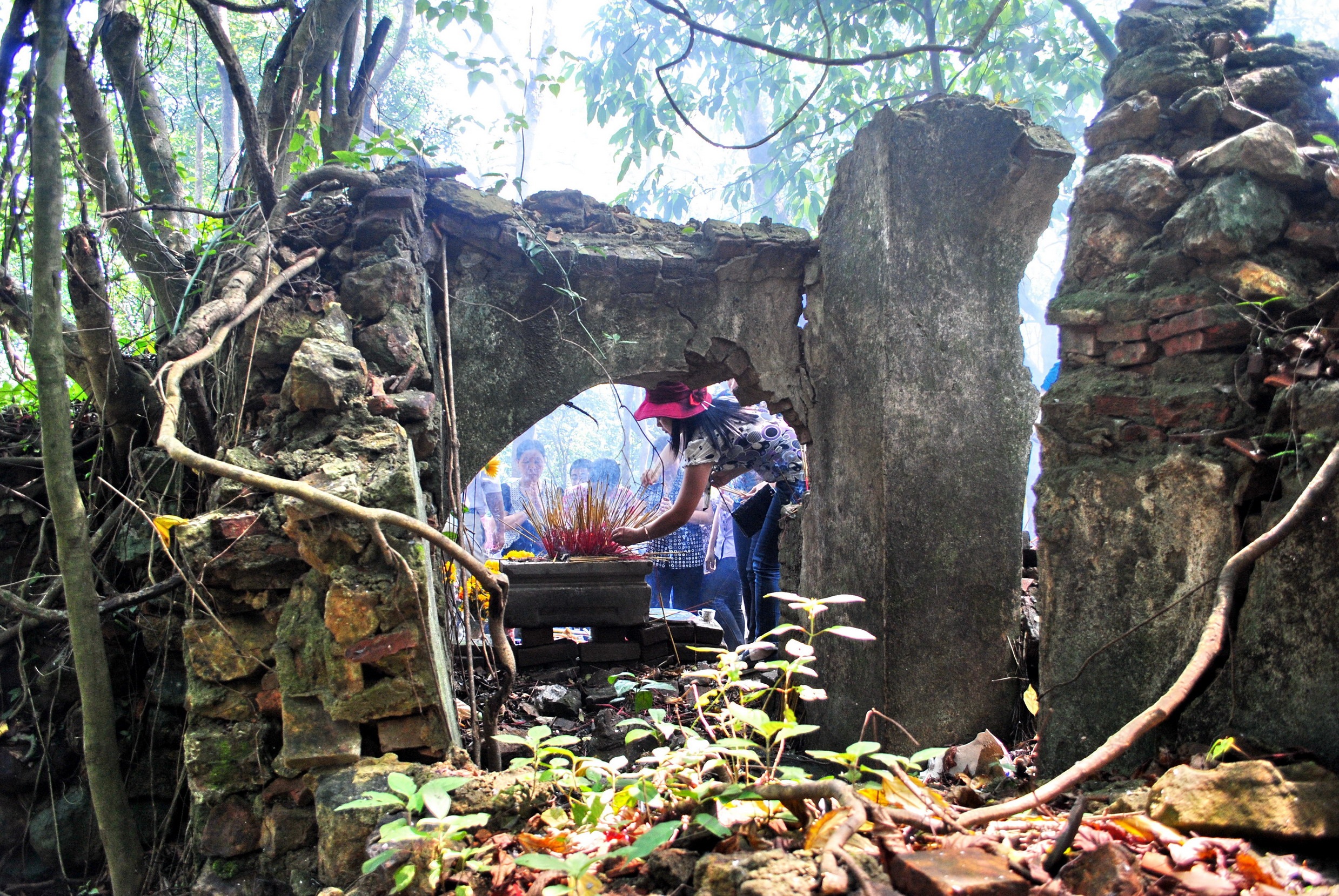
Visitors to the pagoda light incense sticks to commemorate their ancestors.
Than Dinh Mountain and Non Pagoda are places with many legends about fairyland and Buddha. In the past, Than Dinh mountain was also called Bat Nghia Son... Because according to legend, when King Le conquered Champa, he sent soldiers to attack this mountain. Because the mountains are called, they all face west, especially Than Dinh mountain. turn back. Non Pagoda on Than Dinh Mountain was built in the 21st year of Chinh Hoa (1701) under King Le Huy Tong, then was damaged due to chaos. In the 6th year of Minh Mang's reign (1825), the pagoda was temporarily rebuilt with thatched roofs. In the 10th year (1829), local people donated to the court to repair it and re-roof it with tiles.
Today, when going to Non pagoda, the scenery is not much different from what the book Dai Nam Nhat Thong Chi once described: "The mountainside has a deep and spacious cave, the narrow cave entrance has to be tilted to enter a new time." wide. There are two floors in the cave. The stones are arranged like tables and chairs, some resemble Buddha statues, and there are stalactites hanging down. The stalactites in the cave are in some places like golden ash, in some places they are shaped like elephants. Outside the cave there is a stone well with fresh water that never dries up." The entire top of Than Dinh mountain is made up of low, dark gray limestone ranges, bulging like small mountain ranges rising from a large mountain peak, looking very strange. Is that why the ancients named Non pagoda?
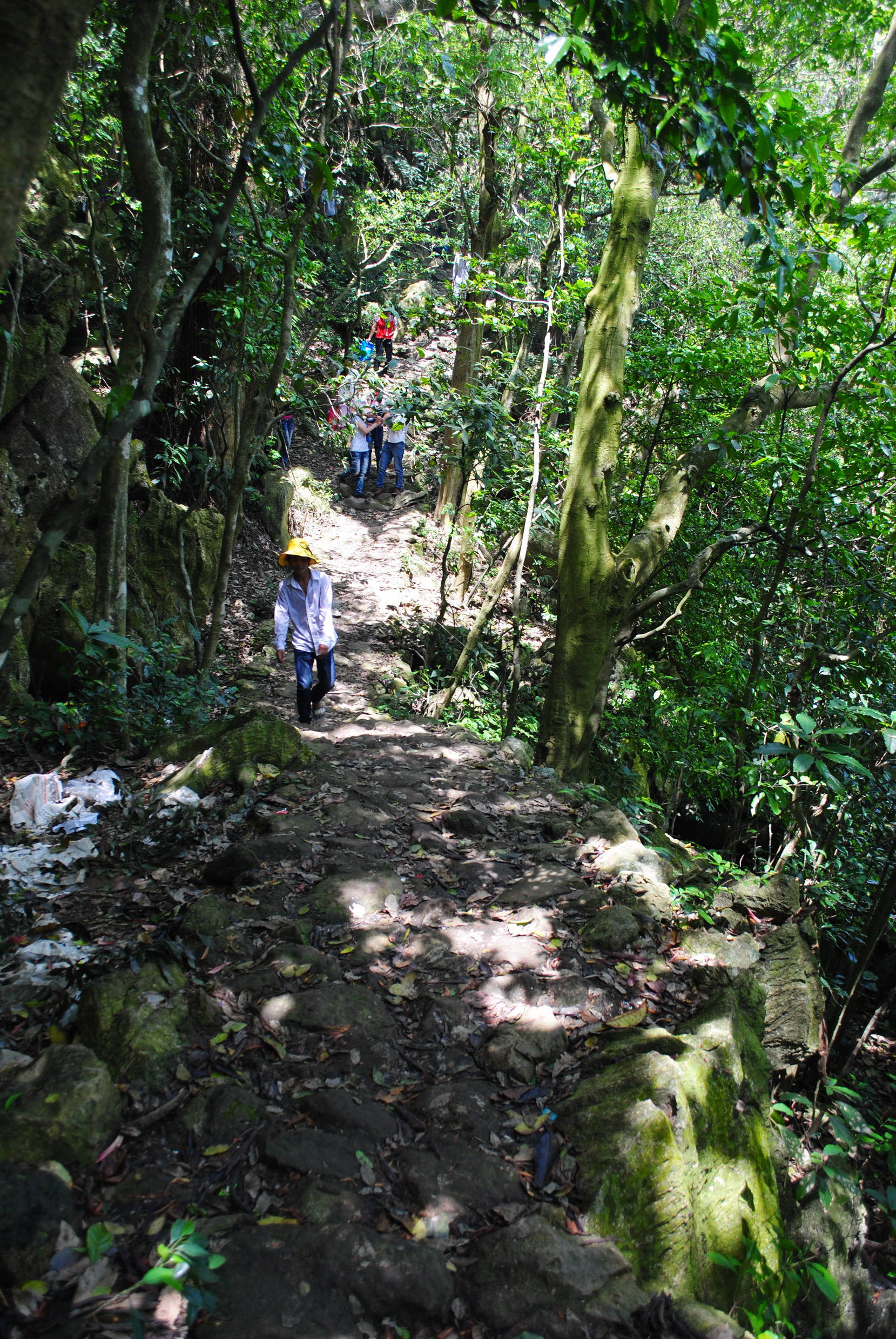
The road to Than Dinh mountain is lined with green trees.
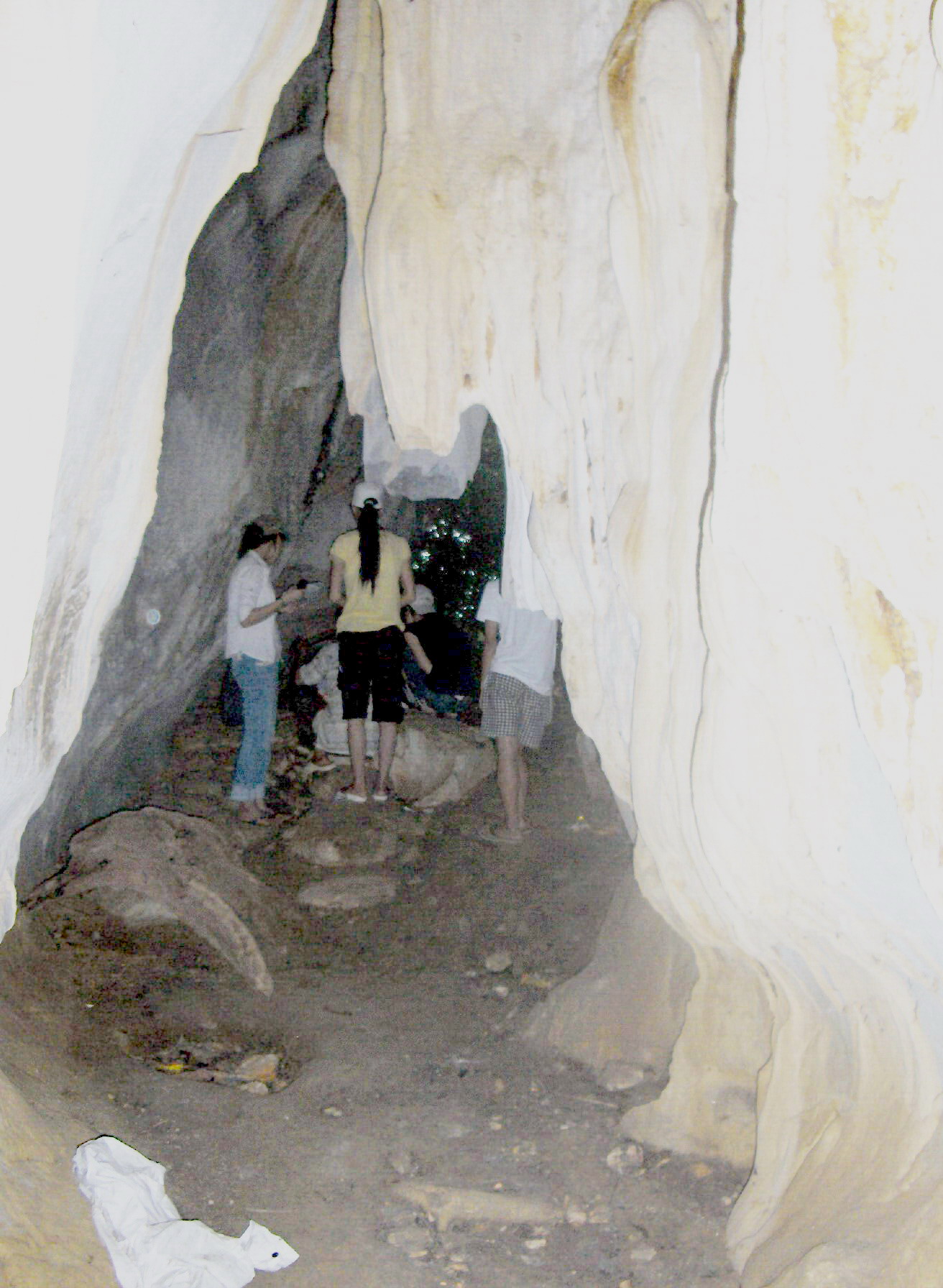
Inside a cave on Than Dinh mountain.
Than Dinh Mountain has three peaks. Stacked stones remind us that this is an official wearing a dragon-winged hat reading literature. That's an eagle spreading its wings, that's a tiger baring its fangs. The ancient Non Pagoda had eight compartments, but now only the mossy, dilapidated stone walls, filled with trees, are left in the middle of a flat land full of ancient trees. Only a small shrine located alone at the northern edge of the trees is still quite intact.
From this flat area, going forward a few dozen meters, down 100 stone steps along the mountainside, we will encounter Tien well. Water flows from the rocky ravines and stagnates in a small rock cavity and the wall of Tien well. Strangely enough, even though it's located right in the middle of dry rocks, on such a high mountain top, the well is always full of cool, clear water. When visiting Non Pagoda, not many tourists forget to take water from this well to use to pray for happiness and peace for a new year.
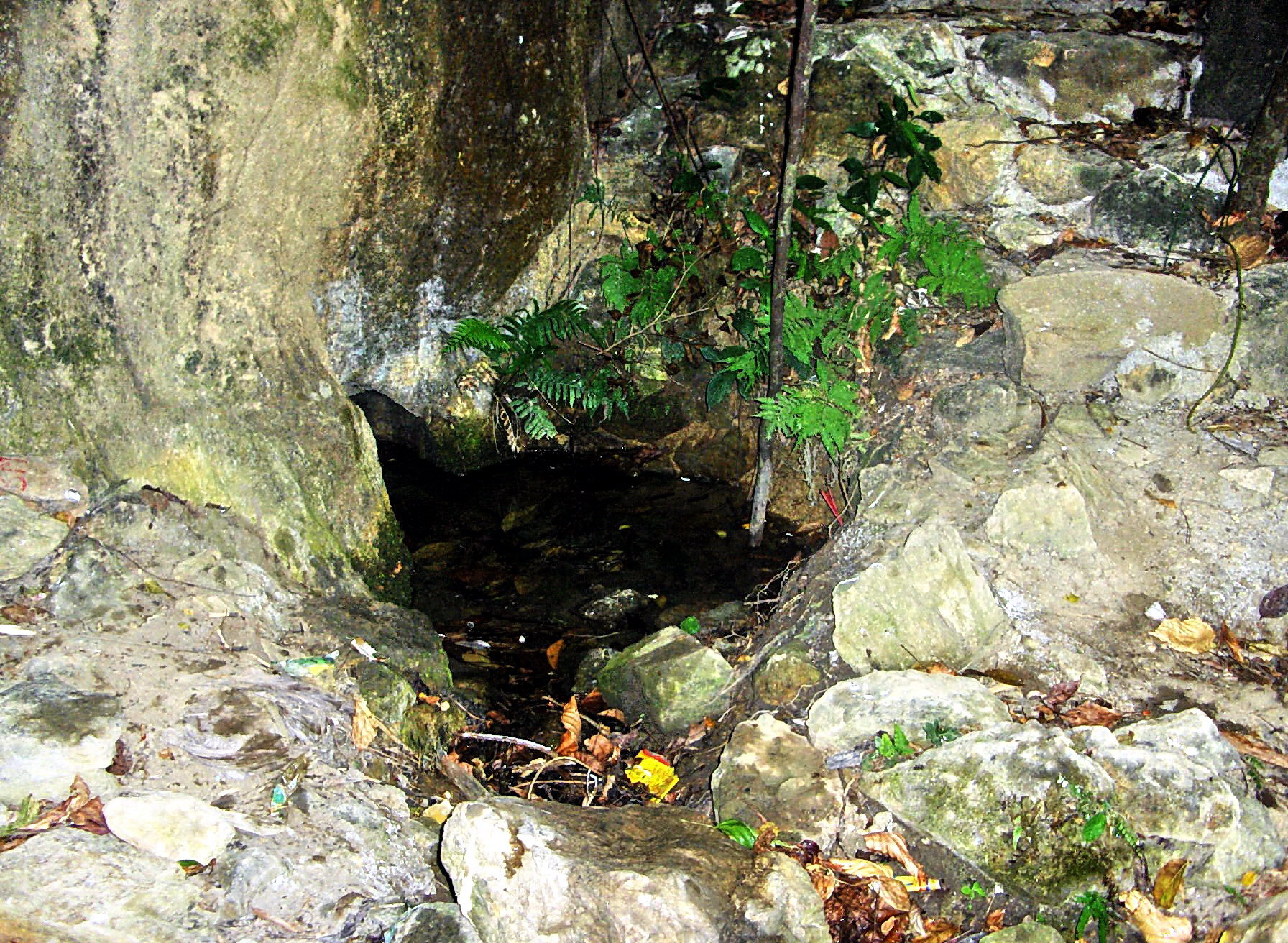
Many visitors who visit Than Dinh Mountain often go to the Fairy well area to get water to pray for peace and blessings in the new year.
Next to the path down to the well, there are a number of small caves, among which the most prominent are Bell cave and Drum cave. When someone knocks on the rocks or strong winds pass by, sounds like drums or bells are heard. The cave has two floors, the stones are arranged like tables and chairs, there are stones that look like Buddha statues, and there are stalactites hanging down. In front of the cave, towards the left, there is a cave, the stalactites in the cave are sometimes hidden and sometimes visible, some are like golden ashes, some are shaped like elephants... Surrounding the cave are rows of jagged limestone stacked on top of each other, looking very breathtaking. item.
At the foot of today's Than Dinh mountain, Quang Binh province and Buddhist monks and nuns throughout the country have built a spacious reception area, creating an attractive Than Dinh spiritual tourism area for tourists from all over every spring. about.
Quang Binh
1286 view
Update day
: 21/02/2024
Lam Giang


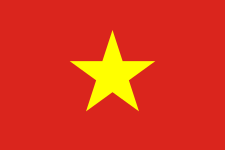 vn
vn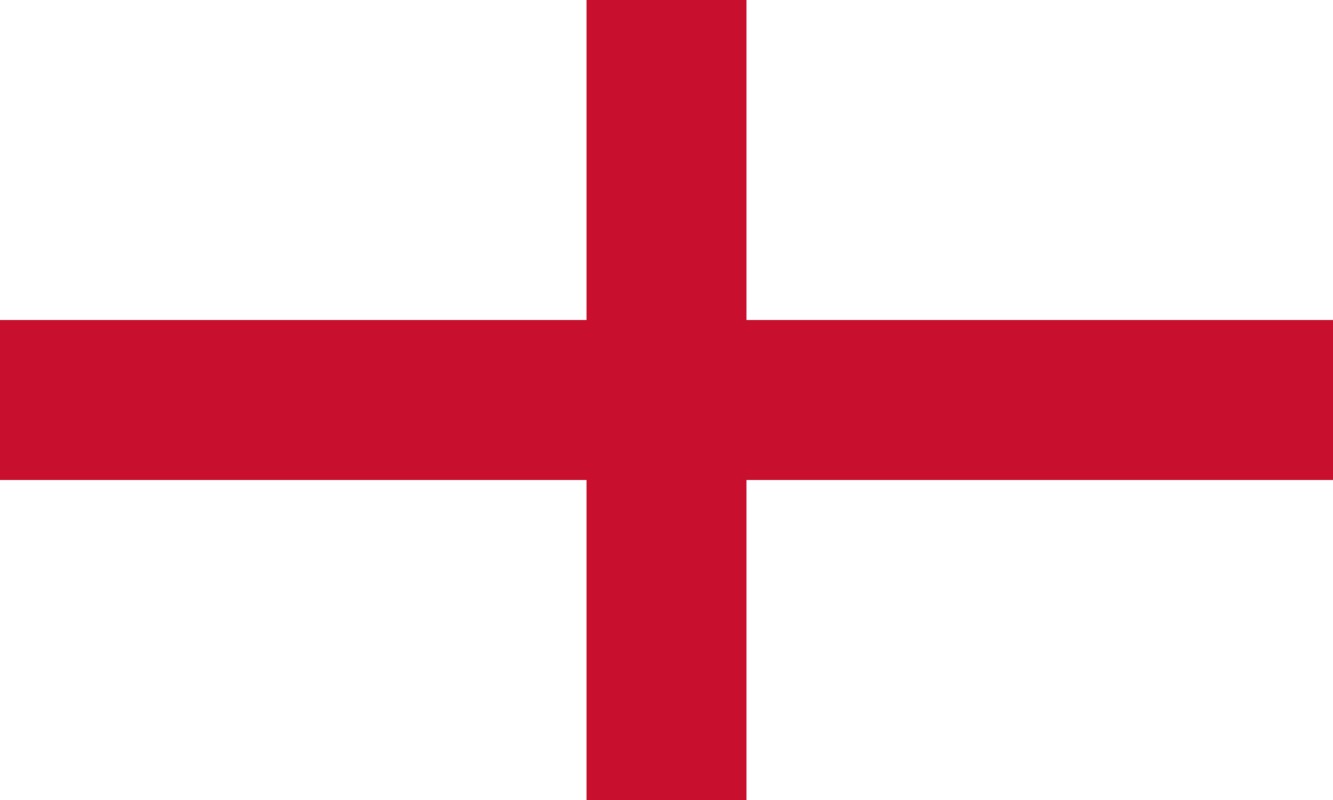 en
en ja
ja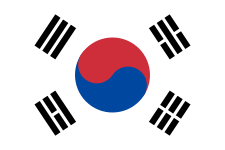 ko
ko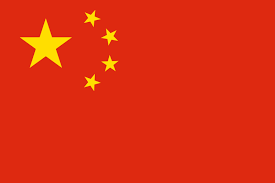 zh
zh


















